
Master 3D modeling for film and video games in under 2 years with CG Spectrum. Get personalized career training online from leading 3D artists from major studios, plus career support and access to a vibrant community. Learn more.
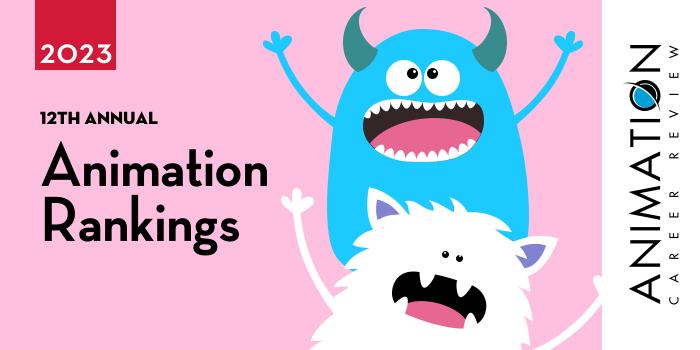
| Ranking | School | Country |
|---|---|---|
| 1 | Gobelins | France |
| 2 | Sheridan College | Canada |
| 3 | Bournemouth University | United Kingdom |
| 4 | The Animation Workshop/VIA University College | Denmark |
| 5 | Royal College of Art | United Kingdom |
| 6 | Emily Carr University of Art + Design | British Columbia |
| 7 | RMIT University | Australia |
| 8 | École Supérieure des Métiers Artistiques | France |
| 9 | Supinfocom Rubika | Multiple |
| 10 | Griffith University | Australia |
| 11 | ARTFX | France |
| 12 | Media Design School | New Zealand |
| 13 | Ontario College of Art and Design | Canada |
| 14 | Escape Studios | United Kingdom |
| 15 | Beijing Film Academy | China |
| 16 | Nanyang Technological University | Singapore |
| 17 | University of Technology Sydney | Australia |
| 18 | Teesside University | United Kingdom |
| 19 | MoPA School of Animation | France |
| 20 | University of Hertfordshire | United Kingdom |
| 21 | Université Laval | Canada |
| 22 | University of Melbourne | Australia |
| 23 | Image Campus | Argentina |
| 24 | York University | Canada |
| 25 | Lucerne University of Applied Sciences and Arts | Switzerland |
| 26 | Queensland University of Technology | Australia |
| 27 | Bezalel Academy of Arts and Design | Israel |
| 28 | ChungKang College of Cultural Industries | South Korea |
| 29 | National Institute of Design | India |
| 30 | Tokyo Animation College | Japan |
| 31 | Institute of Art, Design + Technology | Ireland |
| 32 | Staffordshire University | United Kingdom |
| 33 | City University of Hong Kong | Hong Kong |
| 34 | Swinburne University of Technology | Australia |
| 35 | Limkokwing University of Creative Technology | Malaysia |
| 36 | Glasgow School of Art | United Kingdom |
| 37 | University of Edinburgh | United Kingdom |
| 38 | Emile Cohl School Lyon | France |
| 39 | ISART Digital | France |
| 40 | University of Quebec at Chicoutimi | Canada |
| 41 | Ballyfermot College of Further Education | Ireland |
| 42 | Jilin Animation Institute | China |
| 43 | University of Portsmouth | United Kingdom |
| 44 | Istituto Europeo di Design | Italy |
| 45 | Deakin University | Australia |
| 46 | Academy of Interactive Technology | Australia |
| 47 | Hongik University | South Korea |
| 48 | Digital Hollywood University | Japan |
| 49 | Ecole Georges Melies School | France |
| 50 | Australian National University | Australia |
Our 2023 rankings of the top international animation colleges in the world, excluding the US. For this ranking we only consider formal degree programs (bachelor's degree or equivalent). For an explanation of our ranking criteria, click here.

Gobelins, l'école de l'image (Gobelins, School of Images), has a variety of paths to study Animation. For students seeking an introductory program, Gobelins has an Animation Preparatory Year Program that can be completed on campus or online. For experienced artists looking to enhance their skillset, Gobelins has a 3D Character Animator Certificate Program. Degree-seeking students have three options: the Character Animation and Animated Filmmaking BA, the Bachelor in 3D Animation, and the Character Animation and Animated Filmmaking MA.
The Animation Preparatory Year Program is designed for students with a high school diploma who would like to develop basic artistic and technical animation skills. This program allows students to create at least one project and a portfolio. The Animation Preparatory Year Program can be an entry point for the Gobelins undergraduate degree programs.
The 3D Character Animator Certificate Program is designed for naturals or individuals who have some Animation training. Students will learn by doing through simulation exercises and experiential learning opportunities. Coursework covers 3D Layout, Body Mechanics, Character Animation, 3D Animation, and more. The Gobelins 3D Character Animator Certificate Program takes one year to complete, full-time. Graduates have a 100% employment rate within six months after graduating.
The Character Animation and Animated Filmmaking BA and the Bachelor’s in 3D Character Animation explore Special Effects (SFX), 2D/3D Animation, Scriptwriting, Character and Background Design, Storyboard Writing, Direction, Layout, and Editing. During the course of the programs, students will work their way through the entire Animation production pipeline. Both programs take three years to complete, full-time. Graduates enjoy a near 90% employment rate within six months after graduating.
The Character Animation and Animated Filmmaking MA at Gobelins Paris explores Film Studies, SFX, Directing, Storytelling, Complex Animation, and Storyboarding at an advanced level. Students in this professional program will work in teams on projects and animated productions.
Across all programs, other features include courses taught by professionals from major studios; participation in a speed-recruiting event organized during the Annecy festival with more than 50 companies in attendance; access to state-of-the-art equipment, studios, and dedicated workstations; participation in workshops and projects sponsored by partner companies and public institutions such as Dell, Netflix, BMW, the French Ministry of Justice, Universal Music, Musée Picasso, and Olympus; and a mandatory internship in France or abroad.
Graduates of the Animation Programs at Gobelins Paris are prepared for careers such as 2D or 3D Animator, Character Designer, Storyboard Artist, Crowd and Series Animator, Previz Artist, Film Director, Video Game Animator, Director 2D or 3D, and 3D Animation Supervisor.
Founded in 1964 by the Parisian Chamber of Commerce and Industry (CCIP), Gobelins Paris is one of the oldest Animation schools in the world. Serving approximately 1,185 students today across two campuses in Paris and one in the French Alps, Gobelins provides a variety of programs leading to a BA, MA or Professional Certificate. Single courses such as 2D Animation, Drawing for Movement, and From Storyboard to Animatic are available online. Gobelins Paris is a member of the French Animation School Network known as RECA, and IPAX—the U.S. network of schools recognized by Sony Pictures.

Sheridan College (Sheridan) houses Canada’s largest art school—the Faculty of Animation, Arts & Design (FAAD). Referred to as the “Harvard of Animation” the FAAD has Bachelor’s and Graduate Certificate Programs in Animation, Computer Animation, and Digital Creature Animation-Technical Direction. The Bachelor’s Degree Program takes four years to complete and the Certificate Programs can be completed in just one year.
Across programs, features include collaboration on projects in an immersive, hands-on, studio environment; access to state-of-the-art facilities at the SCAET (Sheridan Centre for Animation and Emerging Technologies); and study abroad opportunities at Dun Laoghaire Institute of Art and Design (IADT) in Ireland.
A major component of the FAAD Animation Programs is mandatory three-month work placement, which allows students to gain professional work experience in the field prior to graduation. Students will also participate in Sheridan’s Annual Industry Day, where they will meet with employers from across North America. Examples of sponsors include DreamWorks, Illumination, Wacom, Wild Brain Studios, Big Jump, HP, Toronto Animation Arts Festival International (TAAFI), House of Cool, Atomic Cartoons, Jam Filled, Brown Bag Films, NVIDIA, Mercury Filmworks, and Switch VFX.
Upon completion of the Animation Programs at Sheridan College, students will have a professional demo reel of their best work. Program alumni work in television, film and feature animation at major studios in Canada and across North America.
Serving 31,080 students, Sheridan College is one of Canada’s largest universities by enrollment. This public Polytechnic Institute employs 3,380 employees, which also makes it one of the top 10 largest employer’s in Oakville. Established in 1967, Sheridan College provides more than 140 programs across five faculties and three campuses including Davis (Brampton, Ontario), Hazel McCallion (Mississauga, Ontario), and Trafalgar Road (Oakville, Ontario).

The National Centre for Computer Animation has been at the forefront of computer graphics and animation education and research in the UK since 1989.
In 2011, the Centre was presented with the Queen’s Anniversary Award for “World-class computer animation teaching with wide scientific and creative applications” and its contribution to world-leading excellence and pioneering development in the teaching of computer animation. The Queen’s Anniversary Prizes form part of the national honours system and are the most prestigious awards in UK education.
The aim of the NCCA is to promote science in the service of the arts and to embed a theoretical underpinning within a contemporary professional setting, allowing graduates to leave BU with highly sought-after skills in the computer animation, visual effects and computer games industries.
One of just 10 institutions in the UK to achieve Houdini Certified School status by Side Effects Software, the NCCA offers courses at both undergraduate and postgraduate levels. For students seeking a BA, the NCAA offers BA (Hons) Computer Animation & Visual Effects. The postgraduate Master’s courses enable students to specialise in MA 3D Computer Animation, MA Digital Effects, MSc Computer Animation & Visual Effects and MSc Artificial Intelligence for Media.
All students learn and create in a professional studio environment with industry standard facilities that include a green screen studio, animation labs, a motion capture studio, and a full suite of industry standard 2D and 3D Software such as Maya and Houdini.
Other features include a collaborative environment; guest speakers; a Group Project with students from all BU NCAA graduate programs; and the Master’s Project, with set production time to create a professional, original project that will be presented at the Degree Show for major industry recruiters.
Graduates have work on films and games for major studios such as Pixar, EA Games, DreamWorks, and Sony Picture Imageworks. Examples include Grand Theft Auto, the Lord of the Rings trilogy, Crysis 2, Happy Feet, Monsters vs Aliens, the Harry Potter series, King Kong, and Fable II, Solo: A Star Wars Story, The Avengers, Fantastic Beasts: The Crimes of Grindelwald, Blade Runner 2049, and Dunkirk.
A major component of the Animation Programs at Bournemouth University is participation in the Annual BFX Festival, one of the largest Animation, Games, and Visual Effects (VFX) festivals in the UK. This international event features networking opportunities with artists from all areas of entertainment, competitions, talks and panels, and masterclasses led by experts in the industry.
Bournemouth University dates back to the 1970s, when Bournemouth College of Technology was created. By 1976, the school had changed its name to Dorset Institute of Higher Education, and again in 1992 to Bournemouth Polytechnic. Within just two months, the school became Bournemouth University. Today, BU provides nearly 140 undergraduate degrees and more than 100 Master's degrees to more than 19,000 students.

The School of Business, Technology and Creative Industries at VIA University College (VIA) houses The Animation Workshop (TAW). Launched in 1988 and housed in an old military complex, TAW comprises seven departments including the Bachelor of Arts Department, Animated Learning Lab, Visual Talent Center, Professional Training, Research and Development, Open Workshop – Artist Residency, and Business Development.
Other TAW features include access to nearly 119,000 square feet of facilities and buildings; instructors who are professionals in the industry; and more than 100 external professionals, established companies, and 30+ Animation, Games, and New Media start-ups. Consisting of more than 650 students, staff, and professionals, TAW also hosts the biggest animation festival in Denmark known as the Viborg Animation Festival (VAF).
The Animation Workshop has both formal Degree Programs and Professional Training (PT) Programs. Examples of PT Programs include 3D Character Animation (14 weeks), ANIDOX:LAB (three months), Animation Production Manager (one week), Creative Simulation Technologies (12 weeks), and PRO Summer School/Toon Boom Harmony 2D Animation (three weeks).
An additional option is Animation Sans Frontieres. Designed for Animation and Production Professionals, this six month training program allows students to spend two weeks at TAW-VIA and two weeks at each of the following film and animation schools: Filmakademie Baden-Württemberg in Germany; MOME - Moholy-Nagy University of Art and Design in Hungary; and GOBELINS Paris, France.
Formal Degree Programs for Animators include BA degrees in Character Animation and Computer Graphic Arts (CGA). Curriculums include assignments, lectures, a number of individual projects, and a group project. Electives allow students to focus in an area of interest. Both the Character Animation and Computer Graphic Arts Programs are taught in English.
A major component of the both programs is the 14-week internship in the final semester. During this time, students will have the opportunity to gain valuable work experience with a production studio such as Illumination, Aardman, Cartoon Studio, Nørlum, or Sun Creature.
Programs culminate a final project that typically takes four to five weeks to complete. Students focusing in animation will complete an animated short film. All students will graduate with a portfolio and showreel. Both programs take 3.5 years to complete, full-time.
Established in 2008, VIA University College serves approximately 19,000 full-time students enrolled in 42 degree programs across the Animation, Film, Technology, Design, Engineering, Business, Education, Health, and Social Studies disciplines. Programs at VIA University are taught in Danish and English. One of Denmark’s largest institutions of higher education, VIA has eight campuses in seven different cities across the Central Region of Jutland in Denmark.
All programs at VIA University College are accredited by the Danish Accreditation Council. VIA is also a certified holder of an ERASMUS+ charter, the school is a member of the European Association for Quality Assurance in Higher Education (ENQA), and it holds a Qualification Certificate from the People's Republic of China.
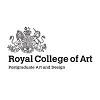
Royal College of Art (RCA) is home to the School of Communication, which houses the Animation MA Program. In existence for more than 30 years, this multidisciplinary program allows students to explore Animation, Games, Film, Augmented and Virtual Reality (AR/VR), Theater, Media, Literature, STEM Disciplines, and more. Other program features include visiting artists and professionals; multidisciplinary elective options; workshops; and experiential learning opportunities such as field trips to animation studios, museums, exhibitions, and archives.
In a hands-on, collaborative environment, RCA Animation MA students will spend the first term in the Animation Forms, Methods & Contexts course, which explores Animation Moving Image practices. In the second term students will work with peers across Royal College of Art as part of the school’s Making Worlds with Others course. In addition, students will complete the Critical Non-Fiction and Experimental-Expanded Practices course. Term two ends with the development of a Project Proposal and Production Plan for the Final Independent Research Project.
The Animation MA Program at Royal College of Art culminates with the Independent Research Project in collaboration with academic and technical staff. This final project will be presented to the Examination Board.
Established in 1837 as the Government School of Design, Royal College of Art is the only entirely postgraduate institution of university status offering degrees in Art, Design, Communications, and Humanities. Programs at RCA are housed in the Schools of Design, Arts & Humanities, Communication, and Architecture. Serving 2,300 students, Royal College of Art is an exempt charity regulated by the Higher Education Funding Council for England (HEFCE).

The Ian Gillespie Faculty of Design + Dynamic Media at Emily Carr University of Art + Design (ECU) houses the Bachelor of Media Arts (BMA) Program. Within the Program are two options for Animators: 2D + Experimental Animation and 3D Computer Animation. Emily Carr is the only school in British Columbia to offer a Bachelor’s Degree in 3D and CG Animation.
Both ECU BMA Programs require 120 credit hours, beginning with the 30 credit-hour Foundation Year. During this time, students will experiment and participate in hands-on activities in the dedicated Foundation Studio, while learning about studio practices and developing technical skills. Foundation Year courses explore Art, Design, and Media. In addition, all first-year students will be enrolled in the Foundation Forum Lecture Series, which hosts speakers and guest artists.
Other BMA Program features include access to a state-of-the-art Animation Studio, Sound Lab, Editing Suites, and the Film + Screen Arts Studio; the opportunity to Minor in Art + Text, Curatorial Studies, or Social Practice + Community Engagement; the DDM Speaker Series; Internships and connections to local Animation studios; admission to festivals, networking events, and conferences; and access to additional on-campus shops and studios such as Basically Good Media Lab, Integrated Motion Studio (motion capture), Digital Fabrication Lab, Mixed Reality Lab, the Soft Shop, Sculpture areas, and more.
The 2D + Experimental Animation Program at Emily Carr University of Art + Design explores Industry-Standard Digital Technologies, Stop Motion, Storytelling, Traditional and Digital Drawing Methods, Filmmaking, Motion Graphics, and Advanced Production Techniques. Course examples include Character Animation I & II, Creative Development for Animation Filmmaking, Storyboarding, Experimental Animation, Story & Structure for Animation, Layout, and Character Design.
The ECU 2D + Experimental Animation BMA Program culminates with Senior Animation Production I & II, where students work through their final projects with guidance and advice via one-on-one communication with instructors and peers. Students in these 400 level courses will also participate in workshops and attend lectures and presentations.
The 3D Computer Animation BMA at Emily Carr explores Visual Effects (VFX) Techniques, 3D Modeling, Lighting and Rendering, Character Animation, Texturing, Storytelling, Grading, and Production Methodology. Students in this program also have opportunities to partner with international institutes and work across Game Development, Film Production, and Research.
Course examples include 3D Layout and Cinematography, Look Development for 3D Computer Animation, Lighting + Rendering Projects, 3D Character Creation, Digital Compositing, and Preproduction for 3D Animation. The program culminates with the Senior 3D Animation Production course, which consists of lectures, presentations, and one-on-one consultation with the instructor.
Final 3D Computer Animation projects are either student-initiated or initiated through partnerships with clients and research groups. Projects may include films, installations, interactive environments, or other works that feature advanced 3D computer animation techniques.
Graduates of the Animation BMA Programs at Emily Carr University of Art + Design are prepared for careers in Animation, VFX, Virtual and Augmented Reality (VR/AR), Character Animation, Game Production, Advertising, Feature Film Production, Motion Graphics, Auteur Filmmaking and Gallery Exhibition, Studio Direction, and Illustration.
Graduates of the BMA Programs at Emily Carr University of Art + Design have been recruited by major studios and organizations such as DreamWorks Animation, Pixar, Industrial Light and Magic (ILM), Universal, and the National Fim Board.
Founded in 1925, Emily Carr University of Art + Design is one of British Columbia’s oldest universities, and the only one that focuses on professional education and learning in Design, Media and the Arts. The school serves more than 2,000 degree-seeking students and 1,900 non-degree students across four Faculties including Ian Gillespie Faculty of Design + Dynamic Media, The Faculty of Culture + Community, Audain Faculty of Art, and Jake Kerr Faculty of Graduate Studies. Programs at ECU include 15+ undergraduate options, three graduate options, and 12 Continuing Studies options leading to a Certificate.

RMIT University (RMIT) houses the College of Design and Social Context (DSC), home to eight schools, 21,000 students, and more than 1,000 academics and teachers. DSC Programs range from Certificates to PhDs in Art, Design, Media and Communication, Fashion, Architecture, Education, Property Management, and Social Studies.
The School of Design at RMIT University (RMIT) is part of the College of DSC. The School has several paths to study Animation. At the undergraduate level, RMIT has an Animation and Interactive Media BDes. Graduate students may enroll in the Master of Animation, Games and Interactivity or the Graduate Certificate in this area.
The Animation and Interactive Media BDes is a full-time, studio-based program that explores 2D and 3D Animation, Interactive Media, and Special Effects (SFX). Courses are hands-on and include Animation and Interactive Media Studio 1-4, Animation and Interactive Media Design for Movement, 2D and 3D Animation, Sound Design for animation, Advanced Visual Effects, and 3D Animation Practice, among others. Students will also have opportunities to take electives to develop skills in Sound Design, Experimental Video, Alternative Animation, and more.
In the final year of this three-year program, Animation students will collaborate on projects with peers, and produce a major industry-ready work on their own.
Graduates of the RMIT Animation and Interactive Media BDes Program are Animators, 3D Visualizers and Modelers, Digital Artists, Art Directors, Character Designers, Motion Graphic Designers, Pre-Production Artists, and Visual Effects (VFX) Artists. Some program graduates teach, while others have launched their own studios and freelance businesses.
Program alumni have exhibited at festivals and conferences such as Annecy, London International Animation Festival (LIAF), ACM SIGGRAPH (Association for Computing Machinery-Special Interest Group on Computer Graphics and Interactive Techniques), and Melbourne International Animation Festival (MIAF). They have also been hired at major studios and agencies such as LucasArts, Viskatoons, and Method Studios (formerly Iloura).
The Graduate Certificate in Animation, Games, and Interactivity at RMIT University consist of three courses: Professional Preproduction; Animation, Games and Interactivity Studio 1; and The Illusion of Life. This six-month program prepares students for careers in Animation and Games, and it guarantees entry into the Master of Animation, Games, and Interactivity.
The RMIT Master of Animation, Games, and Interactivity features access to industry-standard technology and contemporary studios; a collaborative learning and production environment with access to industry professionals, academic staff, and research centers such as the Centre for Games Design Research; the opportunity to work alongside the creative co-working community ACMI X; and the chance to exhibit at Melbourne International Film Festival (MIFF).
Course examples include Animation, Games and Interactivity Studio 1-3; Advanced Play Design; Character, Place and Simulation; Animated Narratives; Research Methods for Design and Digital Media; and Professional Preproduction. In year two of the program, students will complete the Professional Research Project (Animation, Games and Interactivity) worth 24 credit points, and the Animation, Games and Interactivity Industry Portfolio, worth 12 credit points.
The Master of Animation, Games and Interactivity can be completed in two years full-time or four years part-time. Graduates are prepared for advanced technical careers in all areas of Animation, Games, and Interactive Media.
Founded in 1887, RMIT University employs nearly 10,000 global staff members that serve more than 90,000 students across three campuses and two sites in Australia, two campuses in Vietnam, and a research and industry collaboration center in Spain. RMIT also provides programs to students through partners in Singapore, Hong Kong, China, Indonesia, Sri Lanka, India, Belgium, Germany, Austria, and the Netherlands. The undergraduate and graduate programs at EMIT are housed across four academic colleges and 16 academic schools.
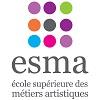
École Supérieure des Métiers Artistiques (ESMA) has a 3D Animation & FX Master’s Degree Program that explores Animation Techniques and the Animation Production Pipeline. Students in this program will have the opportunity to create an industry-ready animated short film in groups of four to seven students. The ESMA CG Animation & FX Masters takes three years to complete and it is taught in English at the Montpellier and Lyon campuses, and in French at all ESMA campuses.
Graduates of the program enjoy a 93% employment rate within nine months of graduation. Program alumni have been recruited by major studios and agencies such as Ubisoft, Sony Pictures Imageworks, Illumination Mac Guff, Framestore, Industrial Light & Magic (ILM), Weta Digital, Aardman, Fontes Architecture, IKKS, Mikros Animation, MPC, Untold, A+Architecture, and ba&sh.
Founded in 1958, the École Supérieure des Métiers Artistiques (ESMA) campus is now located in the Creative Campus, which was built in Montpellier’s new district—The Creative City. The new location is outfitted with state-of-the-art classrooms, sound studios, an auditorium, and the FabLab. Other ESMA campuses include Lyon, Nantes, Toulouse, Rennes, and Bourdeaux France, and Montreal, Canada.
The Animation Program at Supinfocom Rubika has 2D Animation and 3D Animation options that lead to a Bachelor’s Degree in three years and a Master’s Degree in five years. Thanks to partnerships with more than 300 companies, Supinfocom Rubika Animation students will complete several mandatory internships that will allow them to work with real-world clients on a variety of projects. Examples of RUBIKA partners include DreamWorks Animation, Gameloft, Pixar, Industrial Light & Magic (ILM), Disney, Illumination Mac Guff, Framestore, Ubisoft, and Aardman.
Animation students at Supinfocom Rubika will train on industry-standard digital tools such as Maya, ToonBoom, Arnold, Houdini, TVPaint Animation, Nuke, and Adobe Animate. Activities take place in a professional studio environment and include creating still and animated images; mastering the animation production chain; project management; and working in teams to produce short films.
Other program features include several mandatory internships; participation in festivals and contests; annual projects; and a Final 3D Animation Project that will be presented to a professional jury.
Graduates of the Animation Programs at Supinfocom Rubika enjoy a 90% employment rate within a year of graduating. Program alumni are CG Animators, Technical Animators, 2D/3D Animators, VR Animators, Character Designers, VFX Artists, Modeling Artists, Compositing Artists, Shading & Texture Artists, Lighting Artists, Riggers, Layout/Tracking Artists, Lighting Artists and, Set & Environmental Artists.
Supinfocom Rubika Animation alumni have been hired at major studios such as Industrial Light and Magic (ILM), Pixar, Disney Animation Studios, DreamWorks, Aardman, Framestore, and Illumination Mac Guff.
Supinfocom Rubika was created when three schools merged: the Institut Supérieur de Design (Higher Institute of Design, est. 1988), Supinfocom (est. 1988), and Supinfogame (est. 2001). Today, RUBIKA serves 1,200 students each year across four campuses in Valenciennes and Montbeliard France, Montreal Canada, and Pune India. Diploma Programs are available in Animation, Design, and Games. Supinfocom Rubika students can also enroll in a number of one-year preparatory programs.

Griffith University (Griffith U) is home to Griffith Film School—the largest school of its kind in Australia. A Toon Boom Center of Excellence (COE), Griffith Film School has an Animation Program that allows students to collaborate with fellow artists in Griffith U’s Queensland College of Art (QCA) and Queensland Conservatorium. Students also have the opportunity to collaborate on productions with partner institutions such as Beijing Film Academy and Falmouth University
Other program features participation in workshops, seminars, and masterclass programs delivered by industry professionals from LucasFilm, Disney, WETA FX, and Gobelins Paris; access to state-of-the art studios and labs; and participation in film festivals and exchange study tours.
Leading to a Bachelor of Animation, the Animation Program at Griffith University has three majors: Animating, Art Direction, and CGI Technical Direction. Students in all programs have the option to work with 3D puppet or clay animation; experimental media; 2D, 3D, or motion-capture digital animation; or traditional drawn animation.
Animation students will also have opportunities to work on projects for real clients through LiveLab Griffith Film School’s commercial production division. The Internship Program at Griffith U provides additional opportunities to gain valuable experience with a local studio before graduation. Examples include Liquid Animation Studios, Pixel Zoo, Alt.VFX, and Ludo (Bluey).
Graduates of the Bachelor of Animation Program at Griffith University are prepared to pursue careers in areas such as Character Design for 2D and CGI/3D-Animated Projects, Motion Capture, Visual Effects (VFX), Illustration, Production Management, Storyboarding, 2D- 3D- and Stop-Motion Animation, Compositing, Comics and Graphic Art, Pre-Visualization, Scriptwriting, and Matte Painting.
Established in 1975, Griffith University is named after Sir Samuel Walker Griffith, former Queensland Premier and the first Chief Justice of the High Court of Australia, who was the first in the country to introduce degrees in Environmental Science and Modern Asian Studies. Griffith U serves more than 55,000 students enrolled in more than 200 degree programs across the Digital Campus and five physical campuses in South East Queensland, Australia. Programs at Griffith U are housed across more than 20 schools and departments managed by 4,000 instructors and staff.
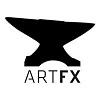
ARTFX, School of Digital Arts, has an Animation Program with 2D Film Animation and 3D Character Animation options leading to a Master’s Degree that can be completed in five years. Open to applicants with a Bachelor’s Degree, the Animation Programs at ARTFX feature masterclasses and other activities with partner studios such as DNEG, Framestore, MPC Film, Illumination Mac Guff, Cinesite, Lighthouse Studios, Mikros Animation, Asobo Studio, Digital District, and Rovio Animation.
Other program features include workshops; a mandatory internship lasting six weeks (students may complete multiple internships); access to state-of-the-art classrooms, labs and studios equipped with industry-standard software such as Storyboard Pro, Affinity, Krita, SideFX Houdini, Autodesk Maya, Dragonframe, ZBrush, Unreal Engine, and Affinity Photo; and RECA—an association founded by ARTFX that consists of 28 industry-recognized French Animation Film Schools.
In the final year of the Animation Programs at ARTFX, students will complete an animated short film that will be screened by a professional panel. The graduation films at ARTFX have won dozens of awards and received more than 900 selections in festivals around the world.
Upon completion of the program, Animation students will have the opportunity to participate in the End-of-Studies Job Dating Session, which attracts French and international recruiters from major Animation studios. To date, ARTFX Animation graduates have enjoyed a 95% job placement rate within six months to a year after graduating.
Program alumni have worked on productions such as Star Wars Episode VIII, Ready Player One, The Lion King, Gravity, and The Minions. Graduates are also prepared to pursue roles such as 2D Animator, Layout Artist, Character Designer, Background Artist, Animator, Concept Artist, Puppet Animator, and Storyboard Artist.
ARTFX, School of Digital Arts was founded in 2004 by French Special Effects pioneer Gilbert Kiner. Launched in Montpellier, the school’s first program was 3D Animation and Special Effects (SFX). Today, ARTFX has three campuses in France that house 80 professors, 50 permanent staff members, and 1,100 students.

Media Design School (MDS) is a Houdini Certified School and the only Unity Authorized Training and Certification partner in New Zealand. MDS also houses the country’s oldest 3D Animation Program. Accredited by the NZQA New Zealand Qualifications Framework (NZQF), the program leads to a Bachelor of Art & Design in 3D Animation & VFX.
Students in this 400-credit, project-based program will develop technical Animation skills as they relate to Game Design, Virtual Reality (VR), Film, Television, and Advertising. Learning takes place in a studio-like environment, with courses such as Animation: Mechanics, Expressions and Gestures, Digital Art I-II, Motion Design Production Techniques, 3D Rendering, Animation: Workflow and Principles, Advanced 3D Technical Studies, 3D Modeling, Animation: Non Verbal Communication, Motion Design Animation, Visual Effects 2D Compositing, and Advanced Creature Animation.
Utilizing state-of-the-art production facilities and equipment, First-Year students will complete Foundation Mini-Project, worth 20 credits. This component consists of a short 3D production. In Year Two of the MDS 3D Animation & VFX Program, students will select a specialization in VFX and complete a 15-credit Mini Project. In Year Three (the final year of the program) students will complete Team Production I-II, worth a total 85 credits. This component consists of a state-of-the-art short film.
Each student will also complete Advanced Individual Production worth 20 credits. This component allows students to complete a project in their area of specialization. This major production will be entered into the international film festival circuit.
Student films have been official selections OR won awards at the San Diego Comic-Con International Independent Film Festival, SIGGRAPH Asia, SXSW Film Festival, Irvine International Film Fest, South Dakota Film Festival, Annecy Festival, Toronto Shorts Film Festival, LA Shorts International Film Festival, British Animation Film Festival, Nashville Film Festival, Rochester International Film Festival, Palm Springs International Animation Fest, Scandinavian International Film Festival, and many others.
Graduates of the 3D Animation & VFX Program at Media Design School are prepared for careers such as Animator, Compositor, 3D Modeler, VFX Artist, Effects Designer, and Technical Director. Graduates have gone on to secure positions at major studios such as Warner Bros., LucasFilm Singapore, Disney, Microsoft UK, DreamWorks, and Weta Digital New Zealand, among others. Program alumni have also worked on major productions such as The Hobbit and Avatar.
Founded in 1998, Media Design School began with a small collection of Diploma programs. Today, this private post-secondary institution provides programs in 3D Animation & VFX, Artificial Intelligence (AI), Augmented and Virtual Reality (AR/VR), Game Art & Programming, Graphic Design, Interactive (UX/UI), and Motion Design. For students seeking Micro-Credentials or Short Courses, MDS provides more than 30 in-demand options. Media Design School of a member of the Laureate International Universities Network.
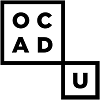
The Faculty of Art at Ontario College of Art and Design (OCAD U) has an Experimental Animation Program that combines Contemporary Art with Augmented and Virtual Reality (AR/VR), 2D and 3D, Digital Compositing, and Stop Motion. Students have opportunities to develop skills in other areas of Art and Design through more than 90 elective options.
Leading to a BFA, the Experimental Animation Program provides access to projects with real-world industry partners and experiential learning placements such as co-ops and summer internships. Study abroad experiences are also available at the OCAD campus in Florence, Italy or another Art and Design school through OCAD U’s Mobility/Exchange Program.
Other program features include the opportunity to exhibit at Toronto’s largest free art and design exhibition—GradEx at OCAD U, and automatic membership at the non-profit XSPACE Cultural Centre, which houses the student-run gallery—XSPACE. The gallery provides a platform for emerging artists of all kinds.
In addition, all Ontario College of Art and Design programs allow students to take a minor in a secondary field of study. More than 25 focused minors are available. Examples include Games and Play, Digital Media, Entrepreneurship and Social Innovation, Illustration, On-Screen, Art and Social Change, Communication Design, and Integrated Media.
The Experimental Animation BFA Program at OCAD U prepares students to pursue careers in both Animation and Gaming as well as Film, Video, and TV Production.
For students in other majors who would also like to study Animation, Ontario College of Art and Design has a Minor in Experimental Animation which can be added to any OCAD U program. An Animation Skills Certificate consisting of five courses (including three elective courses) is also available. Sampe courses include Stop-Motion Puppet Making Studio, Animation Studio, and Storyboarding for Media Production.
A collaboration of the Faculties of Art, Design and Liberal Arts & Sciences, the Experimental Animation Minor combines Media Art, Graphic Design, Drawing, and Experimentation. Course examples include Animation Reframed, 3D Modeling & Animation, Experimental Animation, Animated Illustration, Advanced Animation Studio, and Animation-Stop-Motion. The Experimental Animation Minor at OCAD U can also be taken as a Post-Graduate Certificate.
Established in 1876 as Ontario School of Art, Ontario College of Art and Design is Canada’s oldest art and design school. Serving approximately 4,190 students, OCAD U is also the country’s largest art and design school. Ontario College of Art and Design provides nearly 30 degree programs and close to 30 Minors across the Faculty of Art, Faculty of Design, and Faculty of Arts & Science.

Escape Studios is the first Unreal Authorized Training Center in the UK and an Unreal Engine Academic Partner. Also a Houdini Certified School, Escape Studios provides Animation, Games, and Visual Effects (VFX), and Motion Graphics Programs that have been developed in partnership with (and kept current by) major companies and studios such as PlayStation London, Jellyfish Pictures, Framestore, DNEG, MPC Film, Mikros Animation, and Cinesite. Students in all programs have opportunities to network with these major industry partners.
Other Escape Studios features include intensive training sessions on industry-professional software such as Maya and Toon Boom Harmony; access to state-of-the-art studios and equipment; instructors who have worked with DreamWorks, Warner Bros., Fox, and Disney; and internships and study abroad opportunities. Students also have the opportunity to participate in the Annual VFX Festival hosted by Escape Studios.
Escape Studios has 13 paths to study Animation. For students seeking a shorter program, the school has eight-, 10-, 12-, 18- and 20-week options in everything from Character and Creature Creation to 3D Animation. Degree-seekers have five options including the BA (Hons)/MArt The Art of Computer Animation (3D); BA (Hons)/MArt The Art of Computer Animation (2D); BSc (Hons)/MCsi Character Creation for Animation, Games & VFX; MA 3D Animation; and MA Character & Creature Creation.
Students at Escape Studios will learn in classrooms that look and feel like real animation studios. They will also have the opportunity to master all areas of the Animation production pipeline. Graduates are prepared to work in all areas of Film and Animation as well as Game Art, game Design, and more.
Escape Studios graduates have worked on productions such as Harry Potter, Star Wars, Avengers, Captain America: Civil War, Ex Machina, Fantastic Beasts and Where to Find Them, Gravity, Interstellar, Star Wars: The Force Awakens, and The Jungle Book. PCL alumni have also worked on award-wining advertising campaigns as well as games such as Assassin’s Creed, Forza Horizon, and Unchartered 2. Many program alumni go on to launch their own studios or freelance businesses.
Escape Studios was established in 2002. To date, the school has produced 4,000 alumni known as “Escapees.” Escape Studios graduates have won 377 awards (and been nominated for 23), they have , 65 honorable mentions to their credit, and 155 students have been finalists. Escape Studios provides seven BA and BSc programs, five MA options, and 24 short programs.

Beijing Film Academy (BFA) is China’s only film academy and the largest film school in Asia. Within BFA is an Animation School that launched in January 2000 with one Animation Major. When it opened, the Animation School at BFA was the first academic unit of its kind in China. Today, The Animation School serves approximately 360 students enrolled in Programs leading to a BA, MFA or PhD.
The undergraduate program explores the Art of Animation, Computer Animation, Game Design, and Comics. The MFA explores Film and Design Art. Research areas include Animation Product Design, Stop-Motion Film, Anime Planning, and Game Design. The Animation PhD highlights research in Animation Theory.
Students in all Beijing Film Academy programs benefit from interdisciplinary studies; participation in exchange workshops with the Korean Academy of Film Art (KAFA) or the Netherland Film Academy (NFA); long-term cooperative relationships with the major studios in China and abroad; and the opportunity to participate in the student film festival known as Cinerent Award.
Beijing Film Academy also provides opportunities to collaborate on projects with Massachusetts Institute of Technology (MIT), Gobelins, Straight Entertainment (Hollywood, CA), and Taylor’s University, among others.
Graduates of the Animation Programs at Beijing Film Academy go on to establish careers in all areas of Animation, Film, Gaming, Television, and Visual Effects (VFX). Program alumni are Animators, Directors, Educators, Researchers, Designers, Filmmakers, and VFX Artists. Graduates have worked on productions that have won awards at the Berlin International Film Festival, Venice Film Festival, Cannes Film Festival, the Tokyo International Film Festival, and the Shanghai International Film Festival.
Established in 1950 as the Performance Art Institution of the Film Bureau of the Ministry of Culture, Beijing Film Academy opened with just 38 students. Today, BFA serves approximately 4,000 students across 15 departments and schools. The school provides undergraduate, graduate, PhD, and short-term training programs. Around 72% of students are enrolled in four Majors including Film Directing, Cinematography, Performing Arts, and Chinese Language. Beijing Film Academy is recognized by the Beijing Municipal Commission of Education.

The College of Humanities, Arts, and Social Sciences (CoHASS) at Nanyang Technological University, Singapore (NTU Singapore) houses the School of Art, Design and Media (ADM), which provides a variety of interdisciplinary programs taught in a collaborative environment. ADM students also benefit from experiential learning activities such as fieldwork, a 10-week internship, and study abroad experiences.
Within NTU Singapore’s School of ADM is a Media Art Program that combines Digital Animation, Games, Digital Filmmaking, and Photography. Leading to a BFA, the Media Art Program allows students to choose a Specialization such as Digital Animation or Digital Filmmaking, a second Major, or one of 20 Minors offered across the CoHASS. Examples of second Majors include Communication Studies, Theater and Drama, and Art History. Minor examples include Film, Design and Systems Thinking, and Art History.
Course examples for the BFA Program include 3D Character Animation, Graphic Storytelling, Issues in Animation Practice, Digital Compositing, Cinematic Concepts and Motion Capture Applications, Writing for Animation, Lighting and Rendering Pipeline, Advanced Stop Motion, Visual Effects I-II, Game Design, Film Editing, 3D Production, Storyboarding & Production Design, and Rigging for Animation.
The Media Art BFA Program at Nanyang Technological University, Singapore culminates with the Final Year Project (FYP), worth nine academic units (AUs).
Graduates of the Media Art BFA Program at Nanyang Technological University are prepared to pursue careers in Animation, Game Art and Design, Film, Advertising, and VFX. Some graduates go on to pursue an advanced degree such as the Art, Design and Media MA (ADM MA) at Nanyang, Singapore. The School also has an ADM PhD Program.
Both options are customizable, allowing students to tailor the curriculum to suit their interests. In addition, ADM has six specific Graduate Research Areas. Options include Audiovisual Art; Visual Art and Digital Humanities; Art, Design and Media Histories and Criticism; Design Studies; Southeast Asian Art, Design, and Media; and Cultural Identity and Heritage.
The Audiovisual Art Area is ideal for Animators. This Area surveys the practical and theoretical facets of Film, Character Animation, Sound Art, Motion Graphics, Real-Time 3D Storytelling, Art Installation, Stop-Motion, VR Film, Data Visualizations, Motion Capture, and Experimental Filmmaking.
Graduates of the ADM MA and PhD Programs at Nanyang Technological University, Singapore are prepared for faculty positions, research careers, and advanced positions in all areas of Animation, Film and Television, Advertising, Sound Design, Games, and more.
Nanyang Technological University, Singapore traces its roots back to 1981, when Nanyang Technological Institute was established as a teaching university on the grounds of Nanyang University. Nanyang, Singapore was officially established in 1991. Today, the school serves 33,000 students, making it the second largest public university in Singapore. Nanyang Technological University, Singapore provides hundreds of programs at all degree levels across four colleges that house 14 schools.

The Faculty of Design, Architecture and Building at University of Technology Sydney (UTS) provides several paths to study Animation. Student can earn a Bachelor of Animation Production, a Dual Bachelor of Animation Production/Bachelor of Creative Intelligence and Innovation, or a Dual Bachelor of Animation Production/Bachelor of International Studies.
At the graduate level, UTS has a Master of Animation and Visualization that was developed in partnership with Animal Logic. This program is provided through UTS Animal Logic Academy. Program features include mentoring by industry professionals; learning modeled on real-world production work structures in a custom-built digital studio; and collaborative work practices. Course examples for the program include The Challenge Studio, The Collaboration Studio, and the Connected Studio.
The Master of Animation and Visualization at UTS takes one year to complete, full-time. Graduates are prepared to pursue advanced roles in all areas of Animation, Visual Effects (VFX), and Augmented and Virtual Reality (AR/VR), among others.
The Dual Bachelor of Animation Production/Bachelor of Creative Intelligence and Innovation at University of Technology Sydney takes four years to complete. The Dual Bachelor of Animation Production/Bachelor of International Studies takes five years to complete. All undergraduate UTS Animation Programs feature hands-on experience, internship opportunities, Animation studio courses, and elective options that allow students to develop skills in additional areas of Animation.
The Bachelor of Animation Production at University of Technology Sydney is a three year, full-time studio-based program that requires 144 credit points consisting of 108 credit points of core Animation production subjects, 12 credit points of Communication core subjects, and 24 credit points of electives. Course examples include Context: Animation Character, Context: Animation Character Rigging, 2D Context, 3D Context, and Studio: Narrative Experimentations in Animation.
Students in this industry-focused program have opportunities to work on real projects with clients such as VIVID, the Australia Piano Quartet, and ABC Podcasts. UTS also has long-term partnerships local animation studios such as Animal Logic, Flying Bark Productions, Dave Enterprises, Mighty Nice, and Cheeky Little Media. This provides additional opportunities to work in Animation before graduation.
Dual Degree students have access to the same opportunities and they will complete many of same Animation coursework. Innovation students will take additional courses such as Envisioning Futures, New Knowledge-Making Lab, Creativity and Complexity, Leading Innovation, Past, Present, Future of Innovation, and Transdisciplinary Practice at the Cutting Edge. International Studies students will take additional courses such as International Research Methods, Pathway Options (Germany), Intercultural Communication, and German Language and Culture.
The undergraduate Animation Programs at University of Technology Sydney culminate with an Animation Industry Project. Graduates are prepared to pursue positions such as Animator, Effects (FX) Animator, Matchmover/3D Tracker, Animation Scriptwriter, Stop Frame Model Animator (Claymation), Augmented and Virtual Reality (AR/VR) Designer, Storyboard Artist, Rigger, Character Designer, Editor, Modeler, Compositor, Concept Artist, Director, Previsualization Artist (Previs) Producer, VFX Artist, Rigger, Scriptwriter, and Roto Designer.
University of Technology Sydney (UTS) dates back to 1964 when the New South Wales Institute of Technology was established. The Institute became the University of Technology, Sydney on January 26, 1988. On January 1, 1990, the Institute of Technical and Adult Teacher Education and the Kuring-gai College of Advanced Education became part of UTS. On August 15, the comma was removed from the University’s title to become University of Technology Sydney.
Today, UTS is a public research university that serves approximately 44,615, making it one of the largest universities in Australia. University of Technology Sydney provides over 130 undergraduate and 210 postgraduate programs in a wide range of areas from Architecture and Built Environment to Design, Midwifery, and Science.
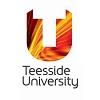
Teesside University is the first Adobe Creative Campus in Europe. The school also provides a number ScreenSkills-recognized Animation Programs at both the undergraduate and graduate levels. Housed in the School of Computing, Engineering & Digital Technologies, program options include BA and MA Degrees in Animation and 2D Animation and Stop Motion. All programs provide an optional Foundation or work placement year.
The Animation BA Program has two specialization areas including Real-Time Games Animation and Motion Capture, and Character Animation for Film and Television. 2D Animation and Stop Motion students will explore the Animation pre-production and production pipelines, as cinematography, character design, and set building. The Animation MA places a strong focus on 3D character animation, while the 2D Animation and Stop Motion MA prepares students to create a short animated film and pitch it to industry professionals and investors.
Students in all Animation Programs at Teesside University have access to state-of-the-art engineering and production facilities; instructors who are leaders in the film, television, and animation industries; and networking opportunities with industry professionals through Animex—Teesside’s International Festival of Animation and Computer Games. Animex attracts professionals from Disney, Sony, Pixar, and Rockstar Game.
Other program features include participation in ExpoTees—Teesside’s Annual Exposition of final year student works; and strategic partnerships major studios and companies such as Industrial Light & Magic (ILM), Double Eleven, Ubisoft, Animmersion, and Creative Assembly.
The Animation Programs at Teesside University culminate with a film sequence or short film. Across programs, graduates have gone on to work for ILM, Animal Logic, Rockstar North, Imaginarium, and Blue Zoo. Program alumni have also worked on films and AAA games such as Red Dead Redemption 2, Star Wars: The Last Jedi, and Spider-Man: Far From Home.
Teesside University was founded as Constantine Technical College in 1930. The school serves more than 21,000 students enrolled in dozens of programs across five schools including Arts & Creative Industries; Computing, Engineering & Digital Technologies; Health & Life Sciences; Social Sciences, Humanities & Law; and Teesside University International Business School.
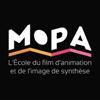
The Animation Program at MoPA School of Animation (MoPA) utilizes a project-based teaching method that emphasizes collaboration and teamwork. Leading to an Expert Diploma in 3D Design, Production, and Animation (Baccalaureate), the program takes five years to complete including Cycle 1: Years 1 to 3; and Cycle 2: Years 4 and 5.
During the first year (Preparatory), students will engage in animated film, photography, and video workshops, as well as numerous projects using a wide range of animation and filmmaking techniques. In Cycle 1, students will work on projects in teams and individually. All students will engage in the entire production pipeline of an animated short film. They will study Modeling, Sound Illustration, Character Design, Script, Film Analysis, Storyboarding, and 3DS Max, Vray, Nuke, Substance, and Zbrush.
In Cycle 2 of the Animation Program at MoPA, students will choose a Specialization. Options include Animation Professions and Image Professions. Students will also work in teams of four to six to produce a short animated film under real studio conditions.
Other MoPA features include access to 200 computers across MoPA’s studios, which house the same equipment and software used in professional studios; internship opportunities; and study abroad experiences.
MoPA student films are presented at the Final Year Jury in the Theatre of Arles, which attracts 2,000 artists and spectators. After this public screening, student films will make their way through the International Film Festival circuit. MoPA graduates are prepared to seek careers in all areas of Animation, Game Design and Development, Film, and Visual Effects (VFX).
MoPA School of Animation (MoPA) dates back to 1988, when it launched as Supinfocom School—the first French institution of its kind devoted entirely to CGI. Supinfocom became MoPA School of Animation in 2015. In 2022, MoPA became a member of a network of schools known as the BRASSART Group. Located across 14 cities in France, the Group specializes in 3D Animation, Video Games, Audiovisuals, and Graphic Arts and Design.

University of Hertfordshire (UH) houses the School of Creative Arts, which has BA Degrees in 2D Digital Animation and 3D Animation & Visual Effects (VFX). At the graduate level, UH School of Creative Arts has an Animation MA that emphasizes multidisciplinary studies, research, and project-based work. Students in this program will actively participate in lectures, seminars, workshops, work placements, and a study abroad year. Other Animation MA Program features include the opportunity to complete a simulated brief in collaboration with program alumni and organizations such as Promise and National Poetry Day.
The 2D Digital Animation and 3D Animation & VFX BA Program provides opportunities to complete several projects, including a final film project to be screened at the School of Creative Arts Animation Exposé. BA students will also complete a number of simulated real-world briefs as well as a portfolio of their best work. Internships and study abroad experiences at partner universities in throughout Europe, and in Australia, South America, Africa, Canada, and Asia are also part of the Program.
University of Hertfordshire graduates enjoy a 96.5% employment rate. School of Creative Arts alumni have won Emmy’s BAFTAs, and Oscars for their work on productions such as Game of Thrones, Harry Potter, Avatar, The Chronicles of Narnia, Gravity, The Jungle Book, Inception, Star Wars, and The Lion King. Graduates of the Animation Programs at University of Hertfordshire have been recruited by major studios such as Industrial Light & Magic (ILM), Blue Zoo, and Creative Assembly.
University of Hertfordshire (UH) was founded in 1952 as a Technical College with an emphasis on Mechanical Engineering, Aeronautical Engineering, and the Natural Sciences. Back then, the school was known as Hatfield Technical College and it was home to 1,500 students. Today, UH serves 32,000 students enrolled in more than 550 programs across two campuses and eight Schools of Study.
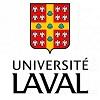
Université Laval is home to the Faculty of Planning, Architecture, Art and Design (FAAAD), which houses the School of Design. Within the School are two paths to study Animation including the Bachelor of Animated Arts and Science (BASA) and the Certificate in the Art and Science of Animation (CASA).
Consisting of 90 credits taken over three years, the Bachelor of Animated Arts and Science is a collaborative, project-based program that explores games, cinema, 3D virtual environments, and design. Course examples for the program include Animation Theories I-II, Stop Motion, Digital Image in Animation, Sound Dimension of Animation, Game Design and Interface Ergonomics, Storyboard, 3D Character Animation, CGI III: 3D Effects, Short Film Script, Organic Modeling, and Graphic Animation (Motion Design).
All BASA students have opportunities to complete group and individual projects, gain work experience through an internship at a professional studio, and complete a final portfolio of their best work. Students will also participate in the Université Laval Placement Service (SPLA) event, which attracts employers from the animation industry.
The Certificate in the Art and Science of Animation at Université Laval is a flexible, 30 credit hour program that can be completed entirely online in one year. CASA students may choose a full-time or part-time schedule. Course examples for the program include History and Aesthetics of Video Games, Digital Image in Animation, Storyboarding, 3D Modeling and Animation, Sound Dimension of Animation, Animation Methodology, and Animation Production.
Students in all Université Laval Animation Programs have access to state-of-the-art digital video studios, sound capture and editing laboratories, a motion capture and facial capture system, and an entertainment room with green screen.
Graduates of the Animation Programs at Université Laval are prepared for careers in Animation, Film and Television, Game Design and Development, Visual Effects (VFX), Multimedia production, Web Design, Architecture, Scientific Visualization, and Directing.
Université Laval dates back to 1663 when Séminaire de Québec was founded. The school was officially established in 1852 after Queen Victoria signed a royal charter allowing Séminaire de Québec to confer degrees and operate as a university. Today, Université Laval serves more than 47,000 students enrolled over 500 programs across 17 faculties and 60+ departments, schools, and institutes.
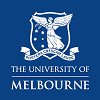
University of Melbourne houses the Faculty of Fine Arts and Music, home to Victorian College of the Arts (VCA). Within the College is an Animation BFA that provides the opportunity to produce an animated short film during every year of the program. For each film, students will work in every role to write, direct, animate, and sound-design their production.
The Animation BFA at University of Melbourne takes place in an intensive, experimental studio-based environment that allows collaboration with peers in programs across Visual Art, Music, Design, Production, and Performing Arts. Courses for the program explore animation research and techniques, storyboarding, experimentation, world building, sound production, writing, project planning, and character creation.
Course examples include Stories of Place, Animation Studio, Writing for Animation, Animation History and Research, Animation Lab, and Collaborative Production. Animation BFA students will have the opportunity to animate, direct, write, and edit short animated film in each year of the program.
The Animation BFA Program at University of Melbourne can be completed in just three years, full-time. Program alumni are prepared for careers in the Film Industry, Game Design, Advertising, Television, Motion Graphics, and Screenwriting for Animation.
Established in 1853, University of Melbourne is the oldest University in Victoria, and the second-oldest in Australia. With more than 54,000 students, University of Melbourne is also one of the top five largest universities in Australia. The school provides nearly 700 programs across 120 majors and approximately 90 study areas.

Image Campus is the first Unreal Authorized Training Center in Latin America. Image is also one of the few schools that provide comprehensive training in 2D and 3D Animation. All options explore the 12 Principles of Animation. Students will also take courses that explore areas such as Character Animation, Storytelling, Acting, Drawing Tools for Animation, Sound, and Human Locomotion. Software utilized includes Autodesk Maya and Adobe Premiere.
Across programs, students will have opportunities to participate in intensive workshops, seminars, and the Image Campus Internship Program.
Image Campus Programs can be completed on campus or 100% online in four to nine months or three years. The shorter programs lead to a Certificate of Approval. Three-year programs lead to a post-secondary degree.
Graduates of the Animation Programs at Image Campus will enter the job market with a demo reel or portfolio of their best work. Around 95% of Image Campus Animation alumni are working in the industry. Examples include Video Art and Animation, 3D Animation for Videogames, Advertising, Production and Animation 3D, Comprehensive Realization of Cartoons, Video Game Development, and Production and Game Design.
Image Campus alumni have been hired at studios such as BITT – Post-Production Studio, Malditomaus – Animation & VFX, Artear Multimedia, 3dar - Virtual Reality, Film and Animation Studio, Plenty Studio, and Bleed VFX.
Established in 2000, Image Campus provides programs in Animation, 3D, Visual Effects (VFX), Art for Videogames, Augmented and Virtual Reality (AR/VR), Multimedia, Illustration, and Audio. In addition to degree programs, Image Campus has short programs that can be completed in four to nine months. The programs at Image Campus are delivered on-campus, online, and via streaming.

York University (York U) has a Digital Media Arts (DMA) Program jointly provided by the School of the Arts, Media, Performance, and Design (AMPD) and Lassonde School of Engineering. Digital Media Arts is Ontario’s only degree program that integrates Art, Engineering, and Computer Science.
Leading to a BA, the DMA Program allows students to study Animation through coursework and electives across AMPD and Lassonde. Examples include Effects and Animation, 3D Modeling and Simulation, Physical and Virtual Worlds, AR/VR, Graphics and Visualization, Artificial Intelligence, User Interfaces, Data Mining, and Interfaces.
Students will also study code and programming tools for games, interactive performance, the internet of things (IoT), immersive and 3D environments, and data visualization. After completing the 18-month core, students will have the opportunity to choose from three Streams (Specializations) including Digital Media Game Arts, Digital Media Arts, and Digital Media Development. Game Arts provides courses such as Introduction to 3D Animation, Simulation and Animation for Computer Games, and Introduction to Modeling.
Other program features include Collaborative Project Development courses; access to state-of-the-art classrooms, labs, studios, and research facilities; and opportunities to gain experience through the York U Technology Internship Program and public showings at Digifest, Interaccess, and Ontario Science Centre.
The DMA Programs at York University culminate with a Digital Media Capstone Project. Graduates of the program are prepared to pursue careers in a variety of fields. Program alumni have gone on to become Animators, Game Developers, Illustrators, UI/UX Designers, AI Software Developers, Cartoonists, VFX Artists, Developers, Technical Artists for Video Games, Directors, and New Media Artists.
Established in 1959 and serving more than 52,000 students from 178 countries, York University is the third largest university in Canada. This teaching and research university provides more than 200 undergraduate and graduate degree programs across 11 faculties and schools.
The Lucerne School of Art and Design is the oldest school of art and design in Switzerland. As part of the Lucerne School of Art & Design, the school offers two degree programmes in animation, the Bachelor of Animation and the Animation MA. In addition to exploring all areas of animation, Bachelor of Animation students have the opportunity to make several short films, complete a professional internship and create a portfolio of their best work.
Graduates of the Bachelor of Animation at the Lucerne School of Art & Design are directors and animators in 2D, CGI and Stop Motion and have a good basic knowledge of VFX, production and sound design.
The Master of Animation programme at the Lucerne School of Art & Design focuses on longer formats in animated film and series concepts.
Graduates of the MA programme at the Lucerne School of Art & Design have become animation filmmakers, film directors, researchers, art directors and professors. They work in film and animation studios, advertising agencies, television studios, large universities and museums, among others.
Serving more than 7,800 degree-seeking students and 4,700 continuing and executive education students, Lucerne University of Applied Sciences and Arts is the largest university level institution in Central Switzerland. Established in 1997, Lucerne houses five schools including Engineering and Architecture, Business, Art and Design, Computer Science, and Social Work.
Lucerne School of Art and Design became part of Lucerne University in 1997. The school was founded in 1877 as the Lucerne School of Arts and Crafts, making it the oldest College of Art and Design in Central Switzerland. The school serves more than 700 students enrolled in 20 programs leading to a Bachelor’s or Master’s degree.

Queensland University of Technology (QUT) houses the Faculty of Creative Industries, Education and Social Justice. Within the Faculty are two paths to study Animation including the Animation BFA and the Bachelor of Games and Interactive Environments (Animation). The BFA requires a full-time schedule that can be completed in three years. The Bachelor of Games and Interactive Environments (Animation) can be completed in three years full-time, and in six years, part-time.
Both programs feature access to state-of-the-art studios and production facilities; internship opportunities; and study abroad experiences.
The QUT Animation BFA is a studio-based program that explores Animated Filmmaking, Game Development, Visual Arts and Visual Effects (VFX). The Bachelor of Games and Interactive Environments (Animation) explores the technical and creative aspects of game development as well as emerging animation techniques. Students in both programs will work on real and practice-based projects.
Across programs, Animation students may enhance the degree by adding a University-Wide second Major and/or a Creative Industries Minor. Second Major examples include Advertising, Integrated Marketing Communication, and Entrepreneurship and Innovation. Minor examples include Character Animation, Design and Visual Storytelling for Animation, CGI, Digital Media Management, Entertainment, Scriptwriting for Interactive Environments, Interaction Design, Visual Arts Practice, and Screen Studies.
The Animation BFA Program consists of courses such as Advanced Animation Production 1-2, Digital Worlds, CGI Technologies, Visual Storytelling: Cinematic Pre-Visualization, and Digital Creatures. Students in this program will complete several projects, including the Final Capstone.
Bachelor of Games and Interactive Environments (Animation) students will take courses such as Animation Aesthetics, CGI Foundations, Game Production and Technology, Digital worlds, and Visual Storytelling: Production Design.
Games (Animation) students will also complete Game Studio 1: Mini-Game Development, Game Studio 2: Applied Game Development, and Game Studio 3: Game Innovation. The Final Capstone Project will be completed across two courses (Phase 1 and Phase 2). During this time, students will work in teams to complete and market a publishable game.
Graduates of the Animation BFA Program at Queensland University of Technology work in Animation, Advertising, Film and Television Production, Motion Graphics Design, Computer Game Development and Programming, Web Design, Multimedia Design, Visual Art, and Post-Production, among others. BFA Program alumni have worked on major productions such as Spider-Man: Far From Home, Guardians of the Galaxy, Avengers: Endgame, I, Robot, Godzilla, and How to Train Your Dragon.
They have also worked on other productions and video games such as Hellblade and Disney Infinity 3.0 at major studios such as DNEG, Disney Animation, LucasFilm, Weta FX, Rising Sun Pictures, and Animal Logic.
Graduates of the QUT Bachelor of Games and Interactive Environments Program are Animators, Game Programmers, Motion Graphics Designers, Web Designers, Computer Game Developers, Digital Content Producer, Multimedia Designers, Visual Artists, Software Engineers, Computer Systems Engineers, and Post-Production Specialists.
Queensland University of Technology began as Queensland Institute of Technology (QIT) in 1965. The school operating under its current name in 1989. Today, this public research university serves nearly 50,000 students enrolled in more than 400 programs. QUT academic fields span the Business, Engineering, Social Justice, Law, Education, Health, Science, and the Creative industries. Programs at Queensland University of Technology are provided across two campuses that house five faculties.

Bezalel Academy of Arts and Design (Bezalel) houses the Department of Screen-Based Arts, which provides programs that explore Traditional Animation, 3D Animation, Stop Motion, Experimental Filmmaking, Video Art, Augmented and Virtual Reality (AR/VR), and Documentary Filmmaking. Department features include access to state-of-the art facilities and equipment; workshops; study abroad experiences; Guest Lecturers; internship opportunities; and portfolio development courses.
The Animation Program at Bezalel Academy of Arts and Design explores Animation, Video, and Filmmaking. Course examples include 3D Character Animation, Animative Thought, 3D Animation – Body Mechanics, Character Design & Storyboard, Drawing in Motion, MAYA and Photoshop, Art Direction for Classic Animation, Illustration, After Effect – Animation, Compositing, Animation Software, Forming Strip Sound, 3D Animation Directing, Art Direction for Stop Motion, Film Editing, and Experimental Animation.
Leading to a BFA in Animation, the Program culminates with the Final Animation Project. Graduates work in Animation Production, Film and Television, Advertising, Games, and many others. Some program alumni have launched their own studios, while others have started their own freelance businesses. Graduates have also won more than a dozen awards for work on a number of productions.
Bezalel Academy of Arts and Design (Bezalel) was officially established in 1906. Serving 2,500 students, the school houses 14 departments that provide programs at the Bachelor’s and Master’s levels. With small class sizes and more than 300 elective courses, Bezalel Academy of Arts and Design has collaborative agreements with 215 academic institutions around the world.
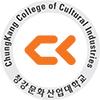
The School of Animation at ChungKang College of Cultural Industries (ChungKang) has an Animation Program that consists of three years of college coursework, followed by one year of intensive training in the Animation Major. During the first three years, the program trains up to 180 students.
The curriculum for the program is studio- and project-based, workshop intensive, and multidisciplinary, allowing students to study Animation, Cartooning, and Game Design. The curriculum also explores Planning, Directing, and Post-Production.
Course examples for the program include 12 Basic Principles of Animation, 3D Modeling & <aping Techniques for Problem-Solving, Basic Graphic Film, Digital Animation Techniques, 3D Character Animation Production, Match Move Compositing, Understanding Film, Visual Storytelling, Animation Directing, CFX Simulation, Visual Development, 3D Rigging, and 3D Human Modeling. Intensive workshops include 2D Animation Production I-II, 3D Modeling, and 3D Animation.
Other program features for the Animation Program at ChungKang include access to state-of-the-facilities, including the largest animation studio in Korea; a sound recording studio and a render farm; courses taught by industry professionals; a tutoring program; opportunities to gain experience through mandatory local and international internships; independent study opportunities; and portfolio development.
Upon completion of the three-year program at ChungKang College of Cultural Studies, students move on to the final year (1-year intensive program), which consists of just 50 students. During this time, advanced Animation students will develop their Thesis Project and Presentation to earn their Animation BA. Graduates are prepared to pursue positions in Animation, Film, Games, Television, Advertising, and other areas that require advanced skills and experience in Animation.
ChungKang College of Cultural Industries opened in 1996 as South Korea’s first post-secondary institution with a primary focus on the cultural industries. Today, ChungKang provides programs ranging from Animation to Early Childhood Education. Programs are housed across the Schools of Manhwa Contents, Game, Culinary Arts, Animation, Fashion & Beauty Style, Convergence, Performing Arts, and Mobile IT, and the Department of Early Childhood Education.
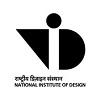
National Institute of Design (NID) houses the Animation Film Design Lab where students study Animation in state-of-the-art classrooms and studios. This production hub allows students, faculty members, and industry professionals to work together to brainstorm and bring their creations to life. The Lab is equipped with technology and production tools such as Wacom Cintiq, sound systems, Dragonframe, HP Workstations, TVPaint Animation, Toon Boom Pencil Check Pro, and other industry-standard software.
Specific programs for Animation students include the BDes and MDes with an Animation Film Design Option. Part of the NID Faculty of Communication Design, both programs feature small class sizes of no more than 19 students; project-based courses; case studies and other interactive sessions; field trips and other experiential learning opportunities; workshops; membership in the NID Film Club; and access learning opportunities at more than 55 overseas partner institutions.
Students will also have opportunities to show their work at the Student International Animation Festival Chitrakatha. This Biennial event attracts national and international animators.
National Institute of Design recently launched a Design PhD that allows students to complete research and creative works in areas such as Digital Media and Film. Students in the Design PhD Program have the same opportunities and access to resources as students in the BDes and MDes Programs.
The BDes Program may be completed in four years at the Ahmedabad campus. The MDes takes 2.5 years to complete and is available at all National Institute of Design campuses. The Design PhD can be completed in four to six years at the school’s maim campus.
Graduates of the BDes, MDes, and PhD Programs at National Institute of Design are Animators, Filmmakers, Character Designers, Storyboard Artists, Producers, Creative Directors, and Consultants at major studios and companies such as Nickelodeon, MTV, Cartoon Network, Infosys, Tata Interactive, and Cognizant.
Program alumni have also gone on to launch their own studios or become educators at NID and other universities around the world.
National Institute of Design was established in 1961 as the National Institute of Industrial Design. The school serves hundreds of students enrolled in more than 30 Bachelor’s Master’s and PhD programs across the Industrial, Communication, Textile and IT Integrated (Experiential) Design disciplines. Comprising three campuses, NID is has been declared an ‘Institution of National Importance’ by the Act of Parliament, by virtue of the National Institute of Design Act 2014. The school is also recognized by the Department of Scientific and Industrial Research-Government of India as a Scientific and Industrial Research Organization.
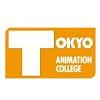
Tokyo Animation College is equipped with an Animation Lab, Comic Lab, Archive Rooms, and a Voiceover Studio for students enrolled in the school’s 13 programs. Options are housed across four departments and include Anime Production (three years), Animator/Animation (two years), Comics (three years), Story Comic (two years), and Character Design (two years).
Students in all programs have access to state-of-the-art facilities such as an Animation, Manga, Illustration, and Voice Acting practice rooms; drawing, computer, and training rooms; vocal, recording, and post-recording studios; and free spaces.
The Character Design Program at Tokyo Animation College provides opportunities to study animation through courses such as Flash Anime, Production Development, 3D Design, and Advanced Flash Anime. However, the most popular options for animators are the Anime Production and Animator/Animation Programs.
The three-year Anime Production Program explores TV Animation, 3D Animation Art, Theatre Animation Production, 3DCG, and Web Animation. Course examples for the program include Advanced Flash Anime, Character Design, Directing Techniques, Color Design, Digital Filming/Editing, Advanced 3DCG, Background Arts, Advanced Sketching I-IV, Business, and Anime Production I-II. Anime Production students will complete the Graduation Production I-II courses leading to a full-length animated production.
Graduates of the Anime Program at Tokyo Animation College are prepared to pursue positions such as Animator, Flash Animator, Technical Director, Animation Director, Cartoonist, Producer, CG Director, Film Director, and Production Controller.
The two-year Animator/Animation Program begins with basic skills such as Sketching, Motion and Drawing. Students will move on to mastering Animation Production Processes such as Color/Filming Editorial Techniques and Background Art.
Graduates of the Animation Program at Tokyo Animation College are prepared for careers such as Key-Animator, Character Designer, Production Assistant, Digital Cell-Painter, Animation Supervisor, and Inbetweener.
Tokyo Animation College traces its roots back to 1979, when the Music School was founded. In 1984, the school became a specialized training institution authorized by the Tokyo Metropolitan Government. In addition to production facilities, Tokyo Animation College houses dorms, libraries and other reference centers, and a career center.
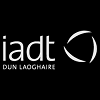
The Institute of Art, Design and Technology (IADT) has an Animation Program with BA and MA options. The IADT Animation BA is a full-time, four-year program that features individual and group projects, workshops, live projects, professional studios, and work placements. Consisting of four Modules and up to 30 students, the program trains students in both Traditional and Digital Media. Students will explore Animation Principles, Scripting, Background and Character Design, Layout, and Storyboarding.
Course examples for the IADT Animation Program include Issues in Film and Animation, Tech Skills: World, Idea Development and Research, Mixed Media Digital Synergies, One-Minute Narrative, Draw-Character-World, Production and Creations, and Professional Studio. Students will also take Business & Entrepreneurship. The program culminates with a Studio Project, Dissertation, and Presentation.
Graduates of the Animation BA Program at Institute of Art, Design and Technology have presented their films at Sundance Film Festival, they have animated and produced award-winning TV series, and some graduates have even been nominated for Oscars. Program alumni have been hired at studios and companies such as Weta Workshops, Brown Bag Films, Boulder Media, JibJab, Cartoon Saloon, and JAM Media.
The IADT 3D Animation MA is the first master’s degree of its kind in Ireland. Developed in partnership with Sheridan College Ontario, this full-time, 18-month program requires a seven-week course in Research Methods for Creative Practices (in Canada or Ireland) and a 15-week final term at IADT’s Dublin campus. Research for the program may take place abroad.
Course examples for the IADT Animation MA include History of Film and Animation, Bringing a Character to Life, Issues in Screen Studies, Acting with a Digital Character, Advanced Tech Skills and Cinematography for Digital Film, Digital Creatures, Telling a Story in 3D Preproduction, Animating in a Virtual Space, and New Media Production.
I addition to a variety of courses, all Animation MA students benefit from technical and project-based modules; team productions and individual exercises; immersive 3D animation production studios; and portfolio development. With a 92% employment rate within a year of graduating, IADT Animation MA alumni are prepared to pursue positions across the Animation, Game, and Film industries.
Established on April 1, 1997, the Institute of Art, Design + Technology (IADT) serves more than 2,500 students from 55 countries. The School provides more than 25 program options leading to a Certificate, Bachelor’s or Master’s degree. Disciplines include Design, Art, Film + Media, Business, Psychology, and Research disciplines. IADT is officially recognized by the Department of Education and Skills of Ireland.
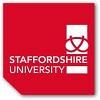
The School of Digital, Technologies and Arts at Staffordshire University (Stafford) is an Unreal Authorized Training Center. The school provides transdisciplinary undergraduate and graduate programs in the Creative Arts and Digital Technologies. Students in all Stafford DTA Programs benefit from hands-on experience in state-of-the-art labs and digital, stop motion, and animation studios at the Stoke and London campuses; visiting speakers; lecture and workshops; apprenticeships; and educational visits.
All School of Digital, Technologies and Arts students also have opportunities to showcase their work each year at both public and industry events such as the Degree Show, GradEX, and New Designers.
For students seeking a degree in Animation, the School of Digital, Technologies and Arts at Stafford University has BA and MA options. The Animation BA is a three-year program that focuses on Character Animation and Career Development. Students may specialize in an area of Animation such as 3D Digital, 2D Digital, Computer Games or Stop Motion. Course examples include 2D and 3D Digital, Drawing for Animation, Pitch. Present. Collaborate., Animation in the Context of Timeline, Anatomy of Animation, and Drawing for Animation: Imaginative Realism, and Game Animation.
Other program features include participation in public screening events, international excursions, and UK Animation Festival trips.
The Animation BA at Staffordshire University culminates with the production of a professional showreel and body of work that supports the students career goals. In the final year of the program, students will have the opportunity to present their work to a panel of industry leaders as part of Industry Portfolio Week.
Stafford Animation BA graduates have gone on to work for studios such as Brown Bag Films, DNEG, Aardman, Cinesite, , Boulder Media Animation, and Carse & Waterman. Program alumni have worked on projects such as Wes Anderson’s Isle of Dogs, the CiTV series Go-Jetters, and Chuck Steel: Night of the Trampires.
The Animation MA at Staffordshire University is a full-time, 13-month program that allows students to customize the degree to fit their career goals. The program begins with Animation Cultures and Critiques, where students explore storytelling, animation design and technologies, and experimental techniques. Students will move on to Animation Industries and Ecosystems, which consists of guest lecturers, industry professionals, networking, and practical skills development. In Animation Production Proofs and Solutions students will work with a supervisor to tailor the program.
In the final phase of the program, students will participate ion Animation Production Consolidation. Over two modules, students will have the opportunity to complete a short film or showreel to be showcased to live audiences for critique.
Graduates of the Animation MA Program have landed positions at DNEG, Boulder Media, Cinesite, and Brown Bag Films.
Staffordshire University opened as a polytechnic institute in 1914. The school was officially given university status on June 16, 1992. Serving thousands of students around the world, Stafford Houses three academic schools (Digital, Technologies and Arts; Health, Science and Wellbeing; and Justice, Security and Sustainability), the Institute of Education, and Staffordshire University London.

The School of Creative Media (SCM) at City University of Hong Kong (CityU) has a Creative Media (CM) Program with options leading to a BA, BSc, MA, MFA or PhD in Creative Media, a BAS in New Media, or a Joint Degree with Leuphana University (LU) (CityU BACM or BAS + LU Digital Media BA). A Creative Media Minor is also available.
Students in all programs have the opportunity to study Animation, Games, Cinema, or New Media through required courses, free electives, and elective clusters such as Animation, Interaction, Game & Playable Media, Media Worlding, and Cinema & Photography. Course examples for Animators include Procedural Animation, Abstract and Experimental Animation, Digital Composition, Web Animation, Computer Programming for Animators, 3D Contents Production in Maya, World-Building in Digital Narrative Media, Character Animation, Computer Animation for Interactive Content, Physical Computing and Tangible Media, and Creative Media Studio.
Features across programs include the opportunity to work and learn in a studio environment; participation in a semester-long exchange program with one of more than 160 partner institutions; professional internships; and the option to complete a month-long summer overseas study program in Animation.
Depending on the program, CityU SCM students will complete a Graduation Project or Graduation Project/Thesis. Graduates of the Creative Media Programs at City University of Hong Kong are prepared to pursue positions in Animation, Media Art, Film, Screenwriting, Television, Video Production, Internet and Multimedia Design, Exhibit Design, Advertising, and Art Education.
City University of Hong Kong was established in 1984. This research university serves more than 18,000 students enrolled in hundreds of programs across 10 colleges and schools, and 29 academic departments. City University of Hong Kong has also established the Hong Kong Institute for Advanced Study (HKIAS), 23 Research Institutes/Centers, and 10 Applied Strategic Development Centers.
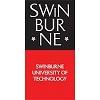
Swinburne University of Technology (Swinburne) is a Toon Boom Center of Excellence. Home to the School of Arts, Social Sciences and Humanities, Swinburne houses the Department of Film, Games and Animation, which has six Animation Programs. Options include a Bachelor of Animation (BA-ANI), Bachelor of Games and Interactivity/Bachelor of Animation (BB-GAMIANI), a Diploma of Screen and Media: Animation, an Advanced Diploma of Screen and Media: Animation, a Certificate IV in Screen and Media, and an Advanced Diploma of Creative Product Development.
Students in all programs have access to state-of-the-art production facilities and studios; opportunities to gain work experience through the Swinburne Internship Program; courses that include hands-on training; individual and collaborative projects; and networking opportunities with studios, businesses, and other organizations.
Across programs, course examples include 2D Production Techniques for Animation, Principles of Game Studies, Writing for Interactive Narratives, Advanced Character Design for Animation, Action Analysis and Locomotion, 3D Production Techniques for Animation, Producing and Production Management for Animation, Dynamics for Games and Animation, Genre and Moving Image, History of Animation, Screenwriting, User-Centered Design & Evaluation, Writing and Directing for Animation, Storyboarding, Action Analysis and Locomotion, and Motion Graphics.
The Animation Programs at Swinburne University of Technology culminate with a Final Animation or Games and Interactivity Project and a professional portfolio. Graduates of all programs are prepared to pursue careers such as Animator, Cinematographer, Stop Motion Animator, Editor, 2D Animator, Director, 3D Animator, Screenwriter, and Producer.
Swinburne University of Technology was founded in 1908 as Eastern Suburbs Technical College. Serving more than 30,000 students from over 150 countries, Swinburne provides a variety of degree and vocational programs in Arts, Engineering, Design, Technology, Health, Business, Science, and Law. Programs at Swinburn are housed across several faculties, eight schools, and four departments.
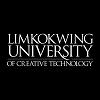
The Faculty of Multimedia Creativity at Limkokwing University of Creative Technology (Limkokwing University) has two paths to study Animation including an Animation & Multimedia Design Diploma and the Animation BA.
The Diploma Program explores Emerging, Experimental, and Advanced Digital Animation Techniques. Course examples include History of Animation, Illustration, Animation Methodology, Design Studies, Animation Production Design, Computer Graphics, Analytical Drawing and Communication Studies. Students in this program will also complete a final project across two courses.
Graduates of the Animation & Multimedia Design Program at Limkokwing University are prepared for careers such as 2D Animator, Concept Artist, Character Designer, Visual Development Artist, Assistant Animator, Background & Layout Artist, Storyboard Artist, and Digital Ink and Paint Artist.
The Animation BA Program at Limkokwing University explores Classical Animation, Animation History, Scriptwriting, Storytelling, Industry Software, Video and Special Effects (SFX), and the Animation Production Pipeline. Animation BA students will complete hands-on projects and coursework in a professional studio-like environment, while gaining real-world skills through the internship program.
Course examples for the program include Animation Practice 1-4, History of Animation, 3D Environment & FX, Video Production, 3D Animation 3, Multimedia Imaging, 3D Modeling, and Animation Project Management. Animation BA students will also take Professional Studies and Entrepreneurship courses. The Animation BA Program at Limkokwing University culminates with an Animation Dissertation and Final Project completed across two courses.
Graduates of the Animation BA Program at Limkokwing University of Creative Technology graduates are prepared for careers such as Animator, 3D Animator, Character Animator, Animation Supervisor, 3D Modeler, Texture Artist, and Digital Matte Artist.
Limkokwing University of Creative Technology was established in 1991 under the name Limkokwing Institute of Creative Technology. Serving more than 30,000 students from over 165 countries, Limkokwing University has 13 campuses in Botswana, the UK, Namibia, Sri Lanka, Lesotho, Cambodia, Indonesia, Malaysia, eSwatini, Nigeria, Sierra Leone, and Uganda. This private university provides hundreds of accredited diploma, degree, and postgraduate programs across seven faculties, Limkokwing Sound & Music Design Academy, and the Limkokwing Post-Graduate Center (PBC).

The School of Simulation and Visualization (SimVis) at Glasgow School of Art (GSA) has several paths to study Animation. At the undergraduate level, SimVis GSA has a BSc in Immersive Systems Design and a BDes in Sound for the Moving Image.
Supported through investments and relationships with companies such as Amazon, Sony, and Microsoft, the BSc Program allows students to specialize in 3D Modeling, which explores 3D Modeling for Animation, Digital Games, and Visual Effects (VFX). Courses for the program are taught by Unity Certified instructors.
Other program features include access to the Hub at Pacific Quay, which houses state-of-the-art production and sound studios; internship and study abroad opportunities; and portfolio development services.
Graduates of the Immersive Systems Design Program at Glasgow School of Art are prepared to pursue positions such as Animator, Character Animator, 3D Modeler for Film and Games, Asset Artist, VFX Artist, Environment Artist, Look Development Artist, and Texture Artist.
Launched in 2018, the BDes in Sound for the Moving Image at Glasgow School of Art is a two-year program that explores sound for Animation, Film and Television, Games, Visual Art, and New Media. Students will have opportunities to collaborate across SimVis and GSA programs to create Animated Films, Games, Television Productions, Installations, and more.
Upon completion of the BDes Program, students will have a professional portfolio of their best work. The portfolio will be presented at the Graduate Showcase.
Graduates of the Sound for the Moving Image BDEs at Glasgow School of Art have gone on to establish careers in Animation, Film and Television, Game Design and Development, and Audio-Visual Arts.
Founded in 1845 as one of the first Government Schools of Design, Glasgow School of Art provides education and research in the Visual Creative disciplines. The school serves more than 2,000 students enrolled in over 50 programs leading to an undergraduate, graduate or PhD degree. Glasgow School of Art is approved by the Quality Assurance Agency (QAA) and the Scottish Further & Higher Education Council (SFC). All degree programs are also validated by the University of Glasgow (est. 1451).

University of Edinburgh is home to Edinburgh College of Art (ECA), which houses five schools: Edinburgh School of Architecture and Landscape Architecture (ESALA), the School of Art, School of Design, Reid School of Music, and History of Art. Within ECA’s School of Design is an Animation Program that leads to a BA. Students in this program will have the opportunity to work alongside peers who develop games or apps, make films, and produce music videos. While teamwork is emphasized, Animation students will have plenty of opportunities to work solo.
Other program features include small class sizes; access to state-of-the-art facilities and equipment such as CGI Labs, rostrum cameras, and stop frame studios; individual workspaces; technical workshops; and the opportunity to interact with visiting Animators who are leaders in the industry.
During the final year of the Animation BA Program at Edinburgh College of Art, students will complete am individual film project or a film as part of a team. ECA Animation graduates have gone on to launch careers at Animation, Film, and Game Studios such as Aardman, Framestore, MPC Film, Rockstar North, and Rushes.
ECA Animation alumni have also worked for Directors such as Tim Burton. Many have also launched their own studios or work as independent filmmakers.
Edinburgh College of Art is one of 21 schools housed across University of Edinburgh’s three colleges including Arts, Humanities & Social Sciences; Medicine & Veterinary Medicine; and Science & Engineering. University of Edinburgh was established in 1583, while ECA dates back to 1760 when it was founded as the Trustees Drawing Academy of Edinburgh. This was the first public School of Art in Britain. The school became Edinburgh College of Art in 1906, and merged with University of Edinburgh in 2011.

Emile Cohl School has been training artists since 1984. The School offers a 2 years “Art designer-Director in animation” Master program, accessible after a Bachelor. The school also offers Master programs in Illustration, Video games and Bachelor programs in fine arts and 3D design.
The aim of the Master is to train students to develop an artistic approach in their works and to enable them to master the artistic production process from start to finish: conception of the aesthetics of the image in the service of a narrative, shaping the project, taking charge of all stages in the production of the film, right through to its finalization and distribution at festivals. The Master aims to develop skills in all the key steps of animation: film writing, character design, storyboard, layout, animation, editing, sound, etc. It also aims at mastering the software used by animation studios. During the second year of the Master, each student produces individually a 3 to 5 minutes animated short. Students develop their original works thanks to high-level artistic and technical training (workshop, project monitoring, conferences, composition painting, sketching, software courses, etc.).
All courses and training are taught by professionals active in the animation industry (Director, Art designer, Storyboarder, etc.). Students participate to a speed-recruiting event with over 40 companies (including Blue Spirit, Caribara, Cube creative, Mikros, Sun Creature, Xilam). The School has a team dedicated to the promotion in festivals (in France and abroad) of the shorts made by Master students, leading to high visibility of their works and regular nomination and award winning, including Annecy Festival. The Master also offers the possibility to participate to high level industry projects and cross schools projects (for instance with Nanyang Technological University and La Salle College of the Art).
Graduates of the program enjoy a 97% employment rate within one year of graduation. Alumni are recruited by major studios and agencies such as Ubisoft, Illumination, Xilam, Weta, Mikros, DreamWorks, as well as many other French and international studios.
Ecole Emile Cohl was created in 1984 in Lyon, the 2nd major city in France, located just 2 hours from Paris and 1 hour from Annecy. It is one of the a very few private schools in France to hold the highest diploma recognition from the French ministry of higher education (so-called “visa”). The school welcomes 850 students in total and boasts 8,000 m2 of workshops, computer rooms, offices and exhibition space, within France's largest vocational training campus. A new campus was launched in 2021 in Angoulême, in the west of France, where 40 animation studios have settled over the last 30 years. Since its creation, the school has trained over 3 000 students who are now working in all the fields of creative industries, in France and abroad. It holds its the name from “Emile Cohl”, a French artist from the beginning of 20th century unanimously recognized as the “father” of the animated cartoon.

ISART Digital (ISART) is a member of the Network of French Cinema Animation Schools (RECA) and Women Animate (Les Femmes s'Animent). The school also has partnerships with Tokyo University of Technology (TUT) and Niigata Computer College, which allow students to immerse in the 3D-FX Animation and Video Game industries in Japan. During a one-month stay, ISART students will have the opportunity to participate in a Game Jam. Longer stays of six to 12 months allow students to complete a research thesis project with a TUT professor. Both options are ideal for students who are interested in Animating for Games or Game Art.
Back at ISART Digital, students who would like to focus in 3D Animation can earn a Bachelor’s/MA in 3D Cinema with an Animation Option. Students may also choose the hybrid option, which allows them to specialize in Animation and Special Effects (SFX).
In Bachelor’s/MA Program, students will work their way through the entire Animation production pipeline in a setting that mirrors a real film studio. Students will also have the opportunity to produce several productions individually or in groups. The option to complete up to two internships is also part of the program.
Based at the main campus in Paris, the 3D Cinema Program at ISART Digital takes five years to complete—from Bachelor’s to MA. Graduates of the program enjoy a 90% employment rate. Program alumni are prepared to pursue positions such as 3D Animator, Concept Artist, Motion Designer, Art Director, Environment Artist, Storyboard Artist, CG Supervisor, FX Artist or Supervisor, and Technical Director.
Launched in 2001, ISART Digital serves approximately 1,200 students across campuses in Paris and Nice, France; and Montreal, Quebec, Canada. More than dozen degree programs are provided across the 3D Animation, Visual Effects (VFX), and Video Game Design disciplines.

In partnership with the School of Digital Arts, Animation and Design (NAD), the University of Quebec at Chicoutimi (UQAC) provides a Bachelor in 3D Animation and Digital Design that allows students to select a Concentration in an area related to Visual Effects (VFX) for Film and Video or Video Games. Students will have the opportunity to select a second area of Specialization in the 3D Production area.
Course examples for the program include Practicing the Principles of Digital Animation I-II, Animation and Motion Capture, Real-Time Animation Practice I-II, Character Animation, Rigging for Visual Effects and Animation, Lighting Practice for Visual Effects and Animation, Project: Design of an Animated Film, and Production of an Animated Film.
Students will take other courses such as Production Management in the Digital Industry, Science and Physical Phenomena, Context and Production Ethics, Film Analysis and Review, Ethical Issues in Professional Practice, Production Simulation Workshop: Visual Effects for Film and Video, Image Integration: Case Studies, and Digital Creation Mentorship. An internship is also part of the program.
The 3D Animation and Digital Design Program at UQAC culminates with the Capstone Project worth six credits. Graduates are prepared to pursue positions within the Animation, Film, Games, and VFX industries.
Founded in 1969, University of Quebec at Chicoutimi is a member of the University of Quebec System of 10 universities. The school serves approximately 6,500 students each year, with 1,000 of these students representing 50 countries around the world. More than 200 programs are provided ion areas ranging from Art and Literature to Computer Science, Engineering, and Nursing.

Ballyfermot College of Further Education (BCFE) has three paths to study Animation. Options include the Classical and Computer Animation (CCA) Program, the Animation (Visual Media) BA, and the Animation Drawing Studies Program. The CCA Program explores Computer and Traditional Hand-Drawn Animation including 3D Modeling, Character Animation, Animating for Television and Games, and Animating for Film. The CCA also takes two years to complete, with the first year leading to a Certificate.
The Animation Drawing Studies Program explores Animation Layout and Design, Painting, Animation Drawing, Sculpture, and Figure Studies. This option can be completed in one year and leads to a Certificate in Art.
The Animation (Visual Media) BA is a two-year program that builds on the Classical and Computer Animation. In year one, students will study Visual Media Theory, Design and Technology, and Professional Practice. In the second year, the program explored Applied Theory and Visual Media Production.
All BCFE Animation Programs emphasize individual and group projects, and portfolio development. Other features include access to dedicated studios equipped with the latest versions of ToonBoom Harmony, and TVPaint Animation; an Adobe CC license for all registered students; guest lecturers and workshops with industry professionals; and visits to animation festivals such as Cartoon Forum, Animation Dingle, and Fete de l’Anime Lille.
All Animation students at BCFE will work in teams to produce Animated films to be screened annually at the Animation and Games Graduate Showcase.
Graduates of the Animation Programs at Ballyfermot College of Further Education are prepared for careers in all areas of Animation, as well as Game Design, Film, Visual Effects (VFX) and related areas. Program alumni have received nine Academy Award nominations, including a nomination for special effects work on Avatar. Many alumni have also gone on to establish successful careers at a number of Irish Animation studios, and abroad.
Established in 1979 as the Senior College, Ballyfermot, BCFE is a vocational school consisting of nine departments housed across the Main Building, Media Building, Arts Building, and the College Sports Hall. In addition to Animation, Ballyfermot College of Further Education provides programs in Art and Design, Television, Film and Visual Effects (VFX), Music, Traditional and Digital Media, Business, Education and Learning, Tourism, Health, and Social Care.
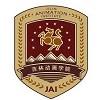
Jilin Animation Institute (JAI) has an Animation Direction Program that leads to a BA. Students may take courses such as Character Design, Visual Communication, Storyboard Design, Drawing, Color and Media, Layout, Animation Project Management, Programming, Post-Production, 3D Design, Principles and Timing, Web Design, and History of Animation.
Other program features include access to state-of-the-art studios, classrooms, and facilities; workshops; the opportunity to complete several Animated films; and experiential learning opportunities such as internships and study abroad experiences.
The Animation Direction Program at Jilin Animation Institute can be completed in four years, full-time. Graduates are prepared for careers in Animation, Film & Television, and Games, among others.
Established in June 2000, Jilin Animation Institute is a private, undergraduate college approved by the Ministry of Education. Serving 12,000 students, the JAI provides 36 Majors across 14 schools/academies including Animation Arts; Manga; Games; Design and Product; Film; Film Technology; Virtual Reality; Cultural Industry Business; Animation Industry; Civil Aviation; Innovation and Entrepreneurship; Marxism; General Education; and International Exchange.

University of Portsmouth (UOP) has several paths to study Animation. At the undergraduate level, students can earn a BA in Animation or a BSc in Computer Animation and Visual Effects. At the graduate level UOP has a Computer Animation MSc for students seeking high-level positions in the field.
Accredited by Joint Audio Media Education Services (JANES), the Animation BA at University of Portsmouth consists of 120 credit hours of study including lectures, seminars, one-on-one tutorials, and workshops. Courses for this program are taught by professionals who have worked for Framestore, Disney, Weta, Sony, Warner Bros., and the BBC, among others.
BA students will complete a number of projects, employment preparation courses, and a paid or unpaid internship. The Animation BA Program culminates with a dissertation, showreel, and portfolio. Final year-end work for the program will be presented at UOP’s Annual Graduate Shows.
The Animation BA Program at University of Portsmouth can be completed in just three years, full-time. Approximately 90% of Animation BA graduates are working or pursuing an advanced degree within 15 months of graduating. Program alumni work at places such as Framestore, Sony Pictures Animation, Cartoon Network, Climax, Kuju Games, and Centroid 3D in Pinewood Studios.
Program alumni have worked on productions such as Avatar, The Amazing World of Gumball, Life of Pi, and Tim Burton’s Alice in Wonderland.
Also JAMES- and Houdini Certified School-accredited, the Computer Animation and Visual Effects BSc explores 3D Animation, Compositing, Physics-Based Simulation, and Concept Drawing, as well as industry-standard software such as Autodesk 3ds Max, Houdini, Maya, NukeX, and ZBrush. Course examples include Modeling for Animation and VFX, Designing for Animation, Motion Capture Applications, Create Worlds, and Advanced Creature FX and Rigging.
Program features include courses taught by active professionals in the Animation and VFX industries; guest speakers, lectures, and seminars; access to motion capture facilities and the VR Lab; participation in Game Jam Portsmouth; workshops and supervised studio sessions; and sponsored prizes for the Final Graduation Project. Students may also participate in the UOP Internship Program. Past placements include Framestore, Industrial Light & Magic (ILM), Moving Picture Company (MPC), and Procter & Gamble.
Graduates of the Computer Animation and Visual Effects at University of Portsmouth work in areas such as 3D Animation, VFX for Television and Film, and Game Art and Design. Program alumni have worked with ILM, Framestore, MPC, Milk VFX, and DNEG.
The Computer Animation MSc at University of Portsmouth is a 180 credit hour program that provides the opportunity to specialize in specific areas of Animation. Modules for the program are 30-60 credits and include titles such as Project Context and Definition (30 credits), Project Design and Development (60 credits), and Project Evaluation and Resolution (60 credits). MSc teaching staff are professionals in the industry who have worked on productions such as Lord of the Rings, Hellboy, Guardians of the Galaxy, Harry Potter, and Exodus: Gods and Kings.
Other program features include intensive and advanced training in industry-standard software such as Maya, Houdini, Nuke, Substance Painter, and Substance Designer; benefits associated with UOP’s relationship with local VFX company Dark Cosmos Creative; participation in industry talks; access to clubs and workshops such as ZBrush Sculpt Club, Film/Animation Nights, and Character Animation Workshop. MSc student will also have the opportunity to attend career and networking events that attract a large number of potential employers.
Graduates of the MSc Program at University of Portsmouth have gone on to establish careers at places such as ILM. Program alumni are Art Directors, Concept Artists, Creative Directors, FX Artists, Animators, and Freelance Artists.
Established in 1908 as a school for chemistry and engineering, University of Portsmouth was one of the largest polytechnic schools in the UK before gaining university status in 1992. Today, the school serves 31,000 students enrolled in programs across just about every discipline. Of the 31,000 students attending University of Portsmouth, 5,700 represent 150 countries around the world.

Istituto Europeo di Design (IED) has several paths to study Animation. Undergraduate options include a CG Animation Diploma and an Illustration and Animation Diploma. Graduate options include a Master’s in Animation Design. The CG Animation and Animation Design Programs are available at the Milan campus. The Illustration and Animation Program can be completed at the Rome campus.
Across all Animation Programs at IED, students have access to animation workshops, state-of-the-art production facilities, and labs such as the Video Editing Lab, and the Video Shooting Lab. All students qualify to participate in the IED Internship Program as well.
The CG Animation Diploma is a 180 credit hour program that takes three years to complete. Students in this program will work across all areas of CG Animation (Animation, Visual Effects-VFX, Games, Interactivity). Course examples include Semiotics of Art, Digital Animation Techniques 1-3, Sociology of Communication, Software 1-3, Filmmaking, Digital Cultures, Interactive Systems 1-2, and Digital Modeling Techniques with 3D.
In the final year of the CG Animation Program at IED, students will complete an individual dissertation project.
The Illustration and Animation Program at Istituto Europeo di Design is a full-time, 180 credit hour program that explores Stop Motion, Character Design, Poster Design, Editorial Illustration, Comics, and Children’s Illustration. Students in this program have the opportunity to experiments in all areas. Course examples include Digital Animation Techniques 1-2, Computer Graphics 1-2, Film and Video History, Elements of Morphology and Form Dynamics, Illustration 1-4, and Video Production Elements.
In the final year of the Illustration and Animation Program at IED, students will have the opportunity to develop a professional portfolio and showreel. The final year also focuses on the students dissertation project.
The Animation Design Master’s at Istituto Europeo di Design is a one year program that comprises the following three areas: Design, Production-Marketing, and Technical-Practical. Across areas, students will focus on Animation Design Methods, Production, and Development. Project Areas include Concept Design for Animation, Character Design, Storytelling, Ambient Design, Pre-Production, Special Effects, Direction, and Soundtrack.
Technical Instrumental Areas include 2D Animation: ToonBoom Harmony, Toon Boom Storyboard, Compositing Advanced Techniques and Effects, and Workshop: Stop Motion - Performance Capture. Production and Marketing Areas in Production Management, Marketing, and Production Critical Analysis. The program culminates with an individual short that demonstrates the students ability to work in the many roles required to produce a film.
Graduates of the Animation Design Master’s at Istituto Europeo di Design are prepared to pursue positions in TV and film, special effects, feature and short film production, video games, cross and transmedia, docufiction, and advertising.
Founded in 1966, Istituto Europeo di Design is a private Design school that serves 10,000 students each year. The school provides more than 100 undergraduate programs and 300+ graduate programs across 11 campuses in Italy, Spain, and Brazil. IED schools include Art and Restoration; Visual Arts; Communication; Design; and Fashion. Istituto Europeo di Design is accredited by the Brazilian Education Ministry.
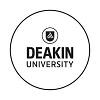
Deakin University is home to the School of Communication and Creative Arts, which has several paths to study Animation. Options include an Animation Diploma, a Bachelor of Film, Television, and Animation, an Animation BDes, and an Animation Minor. The Animation Diploma provides direct access into Deakin University’s Bachelor of Film, TV and Animation. Diploma students will begin the Bachelor’s Program in the second year.
The four-year Bachelor of Film, Television and Animation explores advanced techniques and technologies in filmmaking, television production, and animation. Students in the Animation Minor will select one course from the following: Character Animation, Designing 3D Animated Environments, Character Design and Development for Animation, and Animation Project.
Across the Degree and Diploma programs, students benefit from experiential learning opportunities such as internships and study abroad experiences; access to state-of-the-art equipment in the Deakin TV Studio, labs , and other production facilities; and the opportunity to work on projects with real clients.
Course examples across programs include Principles of Animation, The Australian Moving Image, Visual Effects and Motion Graphics, Writing with the Camera, Animation, Performance, and Capture, Character Design for Animation, and The Celebrity Industries: Star Images, Fan Cultures and Performance. Deakin Animation students will complete a Final Animation Project as the culminating experience for the program.
Together, the Deakin University Diploma and Bachelor’s Degree Programs can be competed in four years. The Bachelor of Film, TV & Animation is a three-year program.
The 3D Animation BDes at Deakin University is recognized by the Design Institute of Australia. The program features courses taught by industry professionals, immersive studios, portfolio development, and projects with local clients. An internship is also part of the program.
Course examples include Animation, Performance, and Capture, Designing 3D Environments, Principles of Animation, Designing 3D Motion, Design Skills and Technologies, Design to Change the World, Interactive Animation Design Studio, Character Design for Animation, and Motion Graphics for Film and Advertising.
The 3D Animation BDes culminates with a Final Animation Project. Students can complete the BDes Program in three years.
Graduates of the Animation and Design Programs at Deakin University have a variety of career options. Examples include Animator, Motion Graphics Designer, Character Artist, Director, Production Manager, Environment Artist, Art Director, Interactive Designer, Game Designer, Creative Director, Illustrator, and Digital Designer.
Established in 1974 Deakin University serves more than 60,000 students across four campuses that house four faculties and 14 schools. Deakin’s more than 200 industry-designed programs cover Art, Engineering, Design, Science, IT, Architecture, Education, Health, Sport, Business, Psychology, Medicine, and more. This public university is accredited and/or recognized by multiple agencies and professionals associations.

The Academy of Interactive Technology (formerly Academy of Information Technology) has trained more than 5,000 students for careers in the Digital and Creative Industries since 1999. For Animators, the Academy of Interactive Technology (AIT) has 2D and 3D Animation Programs leading to a one-year Diploma or a three-year Bachelor’s degree. The Bachelor’s degree can also be completed at an accelerated pace in two years.
All options are available at AIT’s Melbourne and Sydney campuses or in a hybrid (on-campus and online) delivery format.
2D Animation students will explore the 2D Animation Process including Character Development, Storytelling, Drawing, Character Animation, and Directing. Students in this program will master industry software through a variety assignments and immersive labs. Software includes Toon Boom Harmony, Adobe After Effects, Toon Boom Storyboard Pro, Adobe Premiere Pro, Celtx, and Adobe Photoshop.
3D Animation students will explore 3D Visual Effects (VFX) for Film, Games, and Animation. Software includes Autodesk Maya, Maxon Zbrush, Adobe Suite, and Unreal Engine. Across programs, students will take courses such as Concept Design, 2D Animation Mechanics, Screenwriting, Animation FX, 2D Rigging, Visual Storytelling, Animation Layout, 3D Rigging, Screen Revolution, Technical Art, Motion Design, VFX for Film, and 3D Asset Development.
Courses that are unique to the Academy of Interactive Technology, such as The Forge, allow students to develop productions under workplace-like conditions, while being mentored, critiqued, and assessed by industry professionals. The Professional Internship Program provides the opportunity to gain valuable work experience before graduating, and The Industry Launchpad (IL) helps students prepare for and seek employment. IL also helps students build a professional internet and social media presence, and produce effective presentations.
Other AIT benefits include simulated studio environments on campus; access to Animation studios, equipped with cutting-edge technology clay modelling equipment, and Animation light boxes; visiting Animation studios and guest speakers from the industry; access to state-of-the-art post-production studios; mentorship from professional Animators; and access to green screen rooms and audio production studios.
Students in all AIT Animation Programs also benefit from a series of Immersive Animation Experiences, which help develop teamwork, collaboration, interpersonal, creative thinking, problem-solving, and project management skills, among others.
Graduates of the Animation Programs at Academy of Interactive Technology will enter the job market with a professional portfolio of their best work. This includes a showreel, Online Folio, and real-time project in Cinematic Animation or Games.
AIT alumni go on to become Technical Animators, 3D Artists, Illustrators, Cartoonists, Modelers, Art Directors, Game Designers or Developers, Character Animators, Interactive Designers, VFX Artists, Product Designers, Interface Designers, Creative Technologists, Concept Artists, Level Designers, UI/UX Designers, Character Designers, Motion Graphics Designers, Creative Directors, Mobile App Developers, and Multimedia Directors.
The Academy of Interactive Technology was established in 1999. The school specializes in Diplomas, Bachelor’s degrees, and vocational programs in Animation, Game Design, Film, Information Technology, and Interior Design. The Academy of Interactive Technology is a member of NextEd Group.

The College of Design and Arts at Hongik University was established in 1991. Within the College are the Schools of Design and Media; Games; Advertising and Public Relations; and Management and Technology. The College also houses the Department of Sport Science.
Within the School of Design and Media is a four-year Animation BFA Program that explores traditional and emerging techniques in Animation, Film, and Video. Program features include immersive studios; workshops and seminar; and unique elective options such as Cartoon Graphic Narrative, Video Media Startup, Doll Making, and Video Advertisement Production.
Course examples for the program include Visual Storytelling, Hybrid Video Production, Animation Movement and Expression, Video Directing, 3D Animation Production, Video Editing, Short Film Production, and Storyboard and Layout.
The Animation BFA Program at Hongik University culminates with the Video Animation Graduation Project, which takes two academic years to complete.
For students interested in a graduate program, Hongik University has a Digital Animation Program that provides access to state-of-the-art facilities and equipment such as a sound recording studio; Quantel eQ editing workstations; Avid, Final Cut Pro, and Premiere editing systems; and HD cameras and equipment.
Housed in the Graduate School of Film and Digital Media (GSFDM) and leading to an MFA, the Digital Animation Program consists of four semesters of coursework and a full semester of thesis writing. MFA students will also complete a number of workshops and seminars. Course examples for the program include Image Semiotics, Experimental Video and Animation, Video and Production, Animation Planning and Directing, Understanding Color, Character Animation, Lighting and Camera, and Korean Cinema Theory.
The Digital Animation MFA Program at Hongik University culminates with the Final Graduate Video Animation Project.
Hongik University was established as Hong-Moon Higher Educational Institute in Yongsan-gu in 1946. The school was renamed Hongik University in 1947. Today, Hongik University serves approximately 18,400 students enrolled in hundreds of programs across 10 colleges, 12 schools, and 24 departments. Hongik graduates have gone on to become successful Animators, Filmmakers, Writers, Rappers, Actors, Illustrators, Journalists, Television Personalities, and Painters, Poets, and Performers.

The Faculty of Digital Communication at Digital Hollywood University (DHU) has several paths to study Animation. All programs lead to a Bachelor’s Degree. Options include Anime, Film, Game Programming, and 3D Computer Graphics. While each program includes coursework in Animation and 3DCG, the Anine Program is ideal for students who would like to focus solely on Animation or Japanese Animation.
Program features include the opportunity to learn and create in an environment similar to most professional Animation studios; individual and collaborative projects; access to state-of-the-art equipment, labs, and facilities; and coursework that helps students understand the Animation business. DHU students also have opportunities to complete an internship, attend seminars, and study abroad.
Through coursework and projects, DHU Anime students will work their way through the entire Animation Production Pipeline from idea to final production. Course examples include History of Anime, Character Design, Introduction to Animation, Drawing I-IV, Introduction to Animation Production, Real-Time Graphics Techniques, Animation Production, VFX I-III, CG Short Film, Animation Direction I-II, 3DCG I-III, Anime Scenario I-II, Story Making, and Anime Shooting Composite I-II.
The Anime Program culminates with a final project to be displayed at the Graduate Exhibition. The most noteworthy projects are presented with an award.
Graduates of the Anime Program at Digital Hollywood University are prepared to pursue positions in all areas of Anime and Animation.
Digital Hollywood University was established in 2004 as a One Department and One Faculty System. The school serves approximately 1,150 students enrolled in Anime, Game Programming, 3DCG, Film, Graphic Design, Web, and Advanced Media Technology programs. Digital Hollywood University is accredited by the Japan University Accreditation Association (JUAA).

École Georges Méliès School has an Animation Program that provides 24/7 access to art studios, state-of-the-art production facilities, a Disney-style 2D Animation room, an anatomy amphitheater, and professional recording studio. The Georges Melies School also houses a green-screen space for real-life motion capture modeled after the pioneering style of Andy Serkis and Peter Jackson at Weta Digital (Lord of The Rings). A fully functioning theater is also available for screening events.
The Animation Program allows students to explore the entire Animation production pipeline for both traditional animation (stop motion, 2D) and digital animation films. Courses for the program are led by industry professionals from studios such as Ubisoft, Illumination Mac Guff, and Ellipsanime. Course examples include 3D Animation, CFX, Live Action, Character Design, Modeling, Digital Animation, 2D Compositing, Storyboard, Motion Capture, Artistic Direction, PreVis, Rigging and Special Effects (SFX), and Production Management.
Other program features include small class sizes limited to 30 students; participation in the Annecy International Film Festival, Paris Games Week, and SIGGRAPH (among others); and strong ties to the Film and Animation industries, which provides opportunities for internships, projects, and scholarships.
Leading to a Bachelor’s Degree, the Animation Program at École Georges Méliès School culminates with a short film produced in an environment designed to simulate a real production studio. Graduates are prepared to pursue careers in all areas of Animation, Games, and Visual Effects (VFX).
École Georges Méliès School alumni have gone on to work at studios both locally and across the globe. Some alumni have also won prestigious awards. For example, in 2013, Guillaume Rocheron won a Visual Effects Oscar for the 2012 film The Life of Pi; and in 2017, Fabien Nowak won a Visual Effects Oscar for The Jungle Book (2016). Another graduate, Audrey Ferrara, supervised the VFX for The Jungle Book, and the science-fiction film Passengers (2016).
École Georges Méliès School was founded in 1999 by director Frank Petitta and named after the man known as the “Father of Cinematography.” Situated on a modern 9,850 square foot site, Ecole Georges provides four immersive programs focused in the Arts, Animated Image, Video Games, and Special Effects/VFX to approximately 310 students.

The College of Arts and Social Sciences at Australian National University (ANU) houses the School of Art and Design. Established in 1976, the School serves 700 students from around the globe. With a dedicated Center for Art History and Art Theory (CAH&AT), the interdisciplinary and collaborative ANU School of Art and Design provides a range of studio-based programs. Among them is a Bachelor of Visual Arts (BVART) with a Major in Animation and Video.
The BVART is a three-year, 144 unit program, including the 48 unit Animation and Video Major. Students in this Major will explore 2D and 3D Animation, Virtual Reality (VR), Compositing, Video, and Production. Course examples include: The Digital Workspace, Digital Equipment and Studios, Character Development, Visual Storytelling, Precise Drawing and Model Making, Animation: Creative Possibilities, Introduction to Virtual Reality, and Landscape and Environment.
Students in the ANU Animation and Video Major will work in state-of-the-art computer labs and production studios to create works in an area of specialization. Upon completion of the program, students will have a professional portfolio of their best work.
Graduates of the Animation and Video Program at Australian National University are prepared to pursue careers in Film and Television, Visual Arts, Game Design, Advertising, and other related areas. Some program alumni have gone on to launch their own studios or freelance businesses, while others go on to become educators or enroll in graduate school.
Founded in 1946, Australian National University serves 17,380 students from across Australia and 100 countries around the world. The school comprises a main campus in Canberra, along with three other campuses and two observatories in and around Canberra City. Australian National University is officially recognized by the Department of Education and Training of Australia. Programs at the school are individually accredited by numerous accrediting agencies around the world.